Managing Director


TECHNOLOGY
BUSINESS
Events Sector Recovery
First smart village
Gaining Digital Skills
Changing manufacturing






Managing Director


TECHNOLOGY
BUSINESS
Events Sector Recovery
First smart village
Gaining Digital Skills
Changing manufacturing





High-voltage (HV) LiFePO4 battery energy storage systems, commonly referred to as BESS, which drastically improve the power reliability prospects for businesses, have been around for some time, but expect to see a massive surge in 2024.
Businesses in crucial sectors in the economy realise that they must take control of their own energy security and more and more business leaders are realising that renewable energy storage is a far more viable, and reliable, option than internal combustion generators.
Diesel is significantly more expensive than it was preCovid, while maintaining and servicing large generators also puts a large financial strain on organisations that may already be operating on tight margins. Beyond this, the world is demanding a shift towards renewable energy. South African businesses have no choice but to accept this, and accept that access to markets such as the EU will become increasingly difficult and restrictive unless businesses, industries, and countries comply with ever stricter carbon targets. Younger generations value purpose and actively pressure their employers and the brands they support to embrace various environmental, social and governance (ESG) causes.
It is abundantly clear that the perfect storm of poor electricity supply shared with economic and social factors have combined to create an environment for HV BESS systems to become almost synonymous with electricity security in South African industry.
The technology and benefits of HV BESS has evolved to a point where it is applicable and scalable across sectors, making these systems suitable for largerscale applications in industrial, commercial and utility settings. Beyond this, leading suppliers are able to build modular systems, allowing businesses to scale up their investment as needed.
HV BESS systems are either being investigated or being deployed in farming and downstream agricultural contexts, manufacturing, retail centres, and more, to provide power backup capacity. Even if there are unexpected improvements in Eskom’s generation and distribution, this trend will continue in much the same way that solar PV has transformed large swathes of the residential sector.
Modern, modular systems include local and remote monitoring of specific battery telemetry, ranging from individual per-cell visibility, all the way up to data relating to each battery string. As the country loses patience with municipalities and the national utility to finally fix generation and transmission infrastructure, it is obvious that the next big shift in our power landscape this year and beyond will be mass rollout of HV LiFePO4 BESS systems.
• Dickerson is the MD and co-founder of REVOV, a leading LiFePO4 battery supplier in sub-Saharan Africa, for both largescale industrial and residential applications.



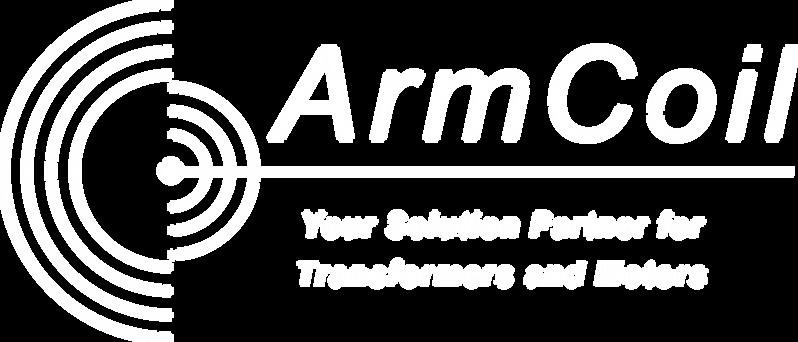
Enhance the reliability and performance of your critical assets with our specialized on-site condition analysis and maintenance services
g & i n s t a l l a t i o n O i l p u r i f i c a t i o n & r e p l a c e m e n t P C B c o n t a m i n a t i o n m a n a g e m e n t O n - S i t e r e p a i r s w i t h u n d e r g r o u n d c a p a b i l i t i e s
M I N I S U B S T A T I O N S : O n - S i t e M i n i S u b s t a t i o n s e r v i c i n g & p a r t s r e p l a c e m e n t I n f r a s t r u c t u r e u p g r a d e s & r e p l a c e m e n t s e r v i c e s .
A D D I T I O N A L T R A N S F O R M E R S E R V I C E S :
O i l s a m p l i n g & a n a l y s i s S a f e o i l d i s p o s a l p r a c t i c e s
I S O 1 4 0 0 1 , I S O 4 5 0 0 1 & I S O 9 0 0 1 A c c r e d i t e d
2 4 H o u r B r e a k d o w n s u p p o r t

Our offerings are customized to meet your specific requirements, ensuring the optimal operation of transformers and associated equipment










PUBLISHER
TTL Media
www.forerunner.co.za
MANAGING DIRECTOR :
Michael Keys
EDITOR:
Stef Terblanche
Phone: 076 647 8235
DIVISIONAL SALES FLOOR MANAGER:
Marc Wessels Marc@ttlmedia.co.za
SALES EXECUTIVES:
Marc Wessels - marc@ttlmedia.co.za
Gaynor Eloff - gaynor@ttlmedia.co.za
Nazeem Hoosen - nazeem@ttlmedia.co.za
ACCOUNTS:
Samantha Fox accounts@ttlmedia.co.za
OFFICE MANAGER:
Sumaya Abrahams sumaya@ttlmedia.co.za
CLIENT LIAISON:
Tania Johnson tania@ttlmedia.co.za
ONLINE:
Tina Lewis forerunner@ttlmedia.co.za
DESIGNED BY:
KCDA - Design Agency
Jaco Kotze - jk@kcda.co.za
www.kcda.co.za - 021 981 6333
PRINTED BY:
Phone: 021 510 5039
Fax: 021 510 5038
Email: faprintcc@yahoo.com
























PUBLISHER
TTL Media
www.forerunner.co.za
MANAGING DIRECTOR :
Michael Keys
EDITOR:
Stef Terblanche
Phone: 076 647 8235
DIVISIONAL SALES FLOOR MANAGER:
Marc Wessels Marc@ttlmedia.co.za
SALES EXECUTIVES:
Marc Wessels - marc@ttlmedia.co.za
Gaynor Eloff - gaynor@ttlmedia.co.za
Nazeem Hoosen - nazeem@ttlmedia.co.za
ACCOUNTS:
Samantha Fox accounts@ttlmedia.co.za
OFFICE MANAGER:
Sumaya Abrahams sumaya@ttlmedia.co.za
CLIENT LIAISON:
Tania Johnson tania@ttlmedia.co.za
ONLINE:
Tina Lewis forerunner@ttlmedia.co.za
DESIGNED BY:
KCDA - Design Agency
Jaco Kotze - jk@kcda.co.za
www.kcda.co.za - 021 981 6333
PRINTED BY:
Phone: 021 510 5039
Fax: 021 510 5038
Email: faprintcc@yahoo.com










Well, here we are already passing the end of the first quarter of 2024, and we can hardly stay ahead of all the innovative changeleading technological events in every industry taking place this year.
In this edition we have tried to cover a representative sample of many of these revolutionary developments. We take you to SA’s groundbreaking use of 3D printing to wipe out the housing backlog, and we show you how technological advances are changing the way we manufacture goods. And while many are still coming to grips with the 4th Industrial Revolution, we expose our readers to the 5th Industrial Revolution that has already arrived.
There’s also much groundbreaking innovation taking place in mining; from Anglo American’s smart mining for sustainability to digital mining solutions and a mining update from the DRC to the Mining Indaba in Cape Town.
In other realms of industry, from banking to property and cryptocurrency, we cover a number of new developments – always
leading the way true to our name as forerunners.
And lest we forget regarding the immense impact this event may have on all of our lives this year, we remind our readers in Boardroom Buzz of the national and provincial elections that will take place on29 May. For the first time since 1994, the possible outcome of these elections is mired in complete uncertainty. The race to the Union Buildings and Parliament is wide open.
We trust that you will enjoy this read. And please, don’t forget, if you have any ideas about what we should be covering, please don’t hesitate to send them to us.
Al the best till next time,
The Editor







info@zibonelefm.co.za
augustk@zibonelefm.co.za
www.zibonelefm.co.za
021 361 7109 | 084 626 7922
DSTV Channel 841
Facebook: Zibonele FM 98.2
Twitter: @zibonelefm_98.2
Instagram: @zibonelefm_98.2
Kholeka August was born and bred in Nqanqarhu formerly known as Maclear in the Eastern Cape. She is one of five children of the late Mr Themba August, a Carpenter, and the late Mrs Nobongile August, a teacher. She is a fourth born with two older brothers, one older sister, and one younger sister. She matriculated at Jamangile SSS, Tsolo and went to Gqeberha to further her studies.
The newly appointed Station Manager of Zibonele FM (the biggest community radio station in the Western Cape) has vast experience in the media fraternity with a proven track record in programs, sales, and marketing management. She assumed the position of the Station Manager in November 2023.
Preceding her appointment she was the Sales and Marketing Manager for eight years after she graduated from news reading and field reporting. Having demonstrated her dedication and meticulous management skills she was entrusted with the responsibility to act as the CEO of the station for a year. Her extensive media experience includes radio programming, the role which saw Zibonele FM obtain numerous accolades under her leadership.
She holds an Honours Degree in Marketing Management (Bachelor of Commerce) MANCOSA, Cape Town. She completed her undergrad studies in Journalism and Audio Visual Production. In the quest to acquire and broaden knowledge, she also holds qualifications as the Assessor and Moderator.
With all the experience she acquired over the years from working at various departments of the station namely, News, Programming, Sales, and Marketing, August believes in the coaching leadership style where she gets to share her skills with the young and vibrant employees of the station. August is passionate about coaching and assisting young professionals who are still trying to find their feet in the industry.
Her goal is to pursue a Masters Degree in Business Administration in the following year.

Those Hermanus and Plett holiday ‘cottages’ that are slow to sell in a depressed market are being boarded up and mothballed. Even the Sandton, La Lucia and Bishopscourt family manors are for sale. The Mercs and BMs are being sold or put on bricks. Removal companies are working overtime, running out of storage space as they wait for ships diverted to Durban and Cape Town from the Red Sea by those
troublesome Houghtis. Money is moving out of the country faster than a group of Somalian spaza shopkeepers being chased by a township mob.
Commercial property brokers suddenly have thousands more square meters of office space on their books and no-one to take it up. Moms are busy ferrying tons of bottled water, gas bottles, tinned food and, yes, reams and reams of toilet paper from the emptying supermarket shelves to the bunkers they call home. In boardrooms emergency liquidation,
foreign listing, exit or relocation plans are gravely discussed with one eye glued to charts and business TV channels. Armageddon has arrived.
Well, not quite. It’s only 30 May, the day after South Africans voted for new national and provincial governments. What has triggered this panic reminiscent of the days leading up to the first democratic elections way back in 1994, is that the ANC lost power and is now in coalition talks with Julius Malema’s Economic Freedom Fighters (EFF) and Jacob Zuma’s
uMkhonto we Sizwe Party (MKP). Yes, there’s a brand-new multi-party government being put together…. And it’s red, militant, radical, corrupt, and socialist… and proexpropriation without compensation. The stuff mothers use to frighten their naughty young ones.
And then, luckily, this is where we wake up. The elections on 29 May are still some ways off and quite frankly, noone knows what’s going to happen. The opinion polls haven’t been much help, inconsistent, vacillating up and down in their predictions for different political parties. What we do know is that these elections are the most uncertain, and likely to be the most consequential elections we have had since 1994.
The scenarios are plentiful. The ANC managed to cling to power. The ANC
lost power with 48% of the votes and is forming a coalition with a bunch of smaller parties. The ANC lost power with only 39% of the votes and is forming a coalition with the EFF and MKP, or with the DA and the Multi-Party Charter group of moderate parties. We simply won’t know until it happens.
Right now, South Africans are being overcome with election fever. Even despicable South African problems like Eskom and loadshedding, unemployment, or crime, although very much part of the various parties’ election manifestos, are taking a backseat to discussions around the uncertainty. And those of us who are watching all of this from the relative safety of our boardrooms know one thing: the markets too are watching very closely - 29 May will be D-Day for a country that has been bleeding. But being South Africans,
it’s likely the choices that are made will be sensible ones. Otherwise, our boardrooms will soon be running empty.
Now here’s one for all fitness fanatical executives. According to News24, Virgin Active is investing millions to turn parts of their popular gyms into office workspaces, including offices and meeting rooms, or boardrooms. That’s right. So now you can run the treadmill or pump some iron at the same time that Jones does a presentation for you on your company’s latest trading results, or while you ink a takeover deal. There’s nothing like mixing business with exercise.

But here’s how Virgin Active have rationalised this move, according to News24. The company says that the shift to work-from-home in recent years has changed how people view gyms. As they were no longer going into the office, people were looking for a different “second space” away from their homes between eight to eight, Virgin South Africa CEO Dean Kowarski reported.
Dean says this is a space where you can work out, have a coffee, and meet people. People want flexibility in a space where they can do everything, he is quoted as saying. An increasing number of members started to do work from the gym as well, he apparently said, which is why the company is directing part of a new R403-million investment into its gyms towards expanding office space and meeting rooms in South Africa. What about loadshedding? No problem. Virgin Active is also equipping its gyms with inverters, generators and upgrading lights to reduce electricity consumption by 2 million KWh. To date, 100 out of 129 clubs have been fitted with alternative power solutions, while the rest will be equipped in the next six months.

On the Home Affairs / visa front, the good news is there are no more visa application backlogs save for two categories: those relating to spousal and relative visas. Well, that’s according to Home Affairs minister Aaron Motsoaledi who was recently responding to a question in Parliament.

Motsoaledi told Parliament the backlog is now just over 40,000, which is around half of the backlog numbers reported at the end of last year. But, even despite this good news there are still concerns over visa turnaround times, which can still take eight months to process. Motsoaledi informed Parliament that his department has 17 visa categories, and only the two categories already mentioned, are currently experiencing backlogs.
For business the excellent news is that s of 31 January 2024, the total number of Critical Skills, Business, and General Work Visas that form part of the annual performance plan have no backlogs, Motsoaledi said. He added that the reason for the remaining backlog is the lack of sufficient capacity, such as immigration officers who have to be tasked with investigating the authenticity of the applicants’ relationships. Hey Ruby, why does your aunt have a beard?
Not many people if any would have thought that a tiny rural village tucked away in a remote corner of South Africa bordered by Zimbabwe and Mozambique and home to around 100 people would lead the way in becoming South Africa’s first smart village.
There has been a lot of talk in South Africa about harnessing the potential and power of the 4th Industrial Revolution (4IR) to transform our cities and rural areas into hubs of technological development and progress that will create wealth for all. South Africa has indeed officially embraced 4IR with initiatives like the Presidential Commission on 4IR while politicians like President Cyril Ramaphosa have been promising the creation of new, mega smart cities. But for now, that remains little more than talk.
But in the remote village of Gwakwani in Limpopo Province the 4IR bull has actively been grabbed by the horns, and life in the village has been transformed almost overnight from the technological sleep of the 19th century into the dynamic 4IR world of the 21st century. No, this is not some fairy tale.
Until quite recently Gwakwani had no electricity, no running water, no internet connectivity and hardly any cellphone connectivity. It was firmly stuck in the Middle Ages. Essential services like schools and clinics were far away and it lacked any kind of income-producing economic activity.
But things began to change dramatically when after 2014 the University of Johannesburg’s (UJ) School of Electrical Engineering started working with the local chief and council to introduce critical modern improvements. The changes that followed here over the past 10 years have been more than remarkable. Recounting how these changes were brought about in the School of Electrical Engineering’s online publication, Beyond Imagining, Cornay Keefer, the school’s project manager, says they started by replacing Gwakwani’s diesel borehole
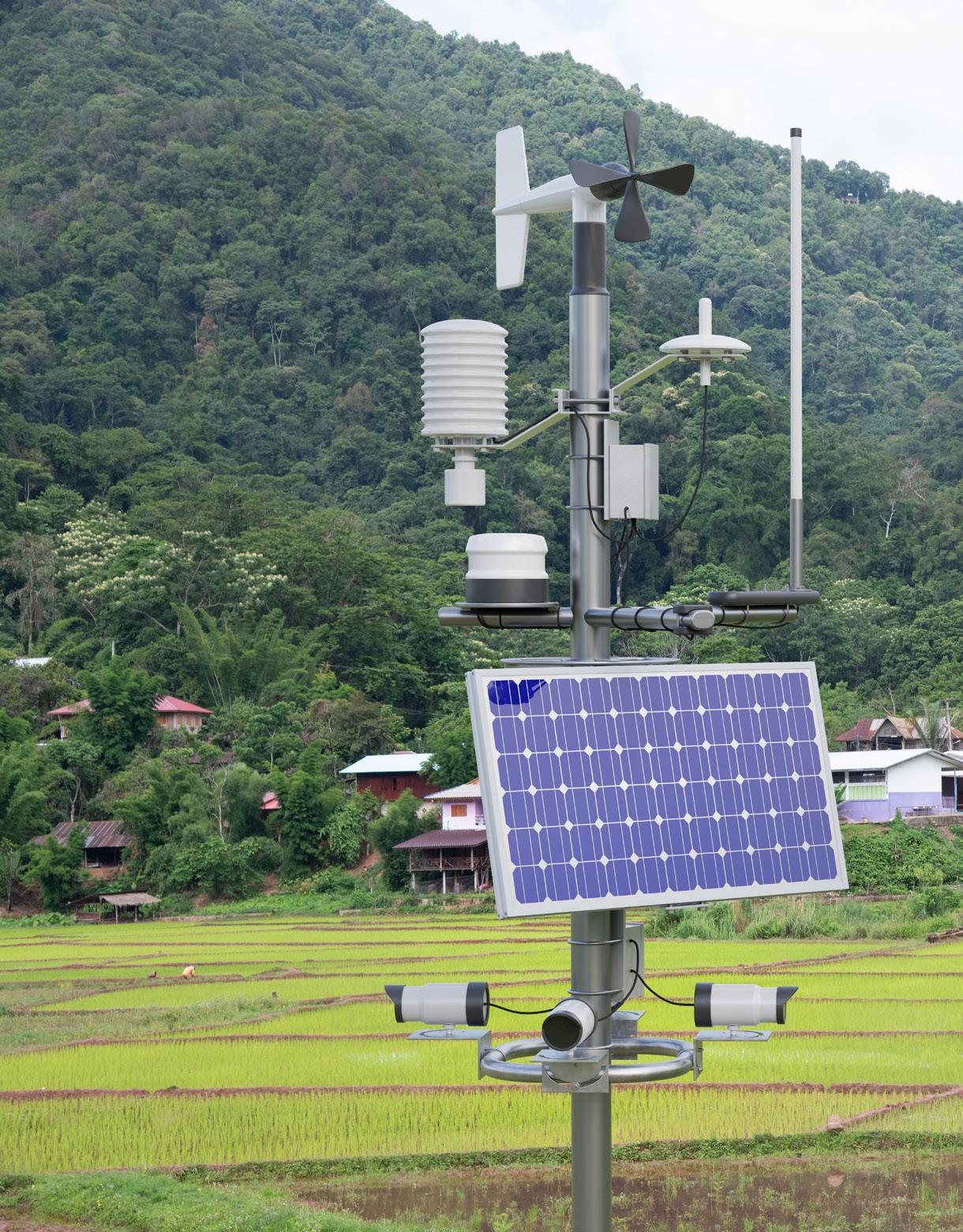
pump with a solar borehole pump and built a network of taps and tanks.
“This was followed by the installation of solar lights in the villagers’ homes, as well as solar streetlights,” says Keefer. For these villagers this must have been an electrifying (pardon the pun) introduction to 21st century living.

Next on the agenda was economic empowerment for the villagers as Gwakwani’s remoteness had always made earning an income very difficult and unemployment has always been high. So, the UJ team embarked on creating a solar-powered bakery, where bread and other baked goods are now produced and sold. Large cold storage units were also installed, while a solar-powered crèche was built for the village’s toddlers. And everything that the UJ team installed in the village, can be monitored remotely.
“Sensors have been put in place all over the village and this data is fed back to a system I can monitor and control from UJ. I can see when the pressure in the water tanks is running low, what the ambient temperature inside the cold storage units is, and when the borehole pump is experiencing issues,” says Keefer.
These remote monitoring solutions are made possible through an Internet of Things (IoT) network connection that UJ has developed in partnership with global communications provider Sigfox.
Professor Suné von Solms, associate professor at the School of
Electrical Engineering, has pointed out that while the technology being used in Gwakwani is not necessarily at the cutting edge of 4IR, the environment in which it has been installed makes it unique – and profoundly meaningful. “I think what’s interesting is that we’re using basic 4IR in an area that has never had access to any form of technology before,” says Prof Von Solms. What has this meant for the villagers? Plenty indeed. Children who previously had never been able to even flick on a light switch are now learning English via the solar-powered television at the crèche, while older children are able to do their school homework with the aid of bright lights in their homes. Employment has also been brought to the village, with eight people employed fulltime at the bakery. Just a few years ago, none of this existed.
Thanks to these endeavours the result is a smart, IoT village that operates without municipal infrastructure and meets the economic and social needs of its residents. But is it sustainable? Yes, indeed says the head of the School of Electrical Engineering, Professor Johan Meyer. “Being able to monitor what’s happening in Gwakwani using 4IR technologies makes this project sustainable. And that’s what we’re after: its longterm success.”
What has been achieved at Gwakwani has made some waves far beyond the village itself. The changes introduced and maintained in that remote village also fit in neatly with the requirements of sustainable development in tandem with 4IR, argue Saurabh Sinha, Professor and Executive Dean of Engineering, University of Canterbury, and Mduduzi Mbiza, Research Associate, University of Johannesburg in a separate paper.
Many would argue that its hard to imagine that the sustainable development goals (SDGs) and the fourth industrial revolution can be part of the same conversation, they say. But they argue that as a briefing paper by the World Economic Forum in collaboration with PricewaterhouseCoopers (PwC) points out: “Over 70% of the 136 SDG targets could be enabled by technology applications already in deployment. To be achieved, both ideas – sustainable development and the fourth industrial revolution – require innovative thinking and a change of attitude.”
The two academics say the 4IR is defined by many as a period of rapid evolution caused by digitalisation, globalisation, and technological innovation.
“It has been happening over the last decade and people are finally starting to take notice, because of its massive global impact. The United Nations’ development goals present an ambitious roadmap for a sustainable future for everyone on the planet.


Some of the 17 goals include ending extreme poverty, ensuring free and quality education, and providing equal universal access to safe drinking water by 2030.
“We argue that achieving the development goals will require a fundamental rethink of how people produce and consume goods and services. We argue that bringing together education, the fourth industrial revolution, innovative thinking, strategic resourcing and partnerships increases the prospects of doing this,” they say.
It’s no surprise that in order to illustrate their argument, they have used the example of Gwakwani. They label the changes that have been introduced in this remote rural village over the past ten years as being “remarkable”.
More particularly, they refer to achieving the goals of building resilient infrastructure which includes not only access to electricity but also increasing access to information and communications technology.
“We argue that advancing sustainable development goals through the fourth industrial revolution starts by prioritising two goals
in particular – SDG17 (which is about partnerships) and SDG9 (about industry, innovation and infrastructure).
“Goal 17 aims to strengthen the means of implementation and revitalise global partnerships for sustainable development. It has five components: finance, capacity building, systemic issues, technology, and trade.
“But cross-sector and cross-country collaboration is key. And individuals, non-profit organisations, governments, higher education, and the business sector need to use their resources to jointly solve these global societal challenges and achieve shared goals.
Partnerships must be built on principles and values while placing people at the forefront, especially those in developing countries.
“Goal 9 seeks to build resilient infrastructure. It also seeks to promote inclusive and sustainable industrialisation and foster innovation. It’s made up of three important aspects: infrastructure, industrialisation and innovation,” they say.
“Infrastructure provides the basic physical systems. Industrialisation drives economic growth and creates job opportunities. Innovation advances technological capabilities and prompts the development of new skills.
Increased access to information and communications technology is an important part of the picture. Universal and affordable internet is therefore key.
Access to reliable internet and infrastructure such as electrical power are some of the first and most important components towards realising technologies powered by the fourth industrial revolution,” they say.
And this is where they bring in South Africa’s first smart rural village, Gwakwani, as a real-life example of what can be achieved.
Pointing to the sustainability of the Gwakwani project through ongoing monitoring via the Internet of Things (IoT), they say the IoT allows data collection and exchange between devices and systems. It can include interactions between humans and machines. This data exchange uses identification, data capture and communications technologies. The internet of things is expected to have a significant impact on the economy and society, with estimates of up to $11.1 trillion per year in economic value by 2025.
– Staff Writer

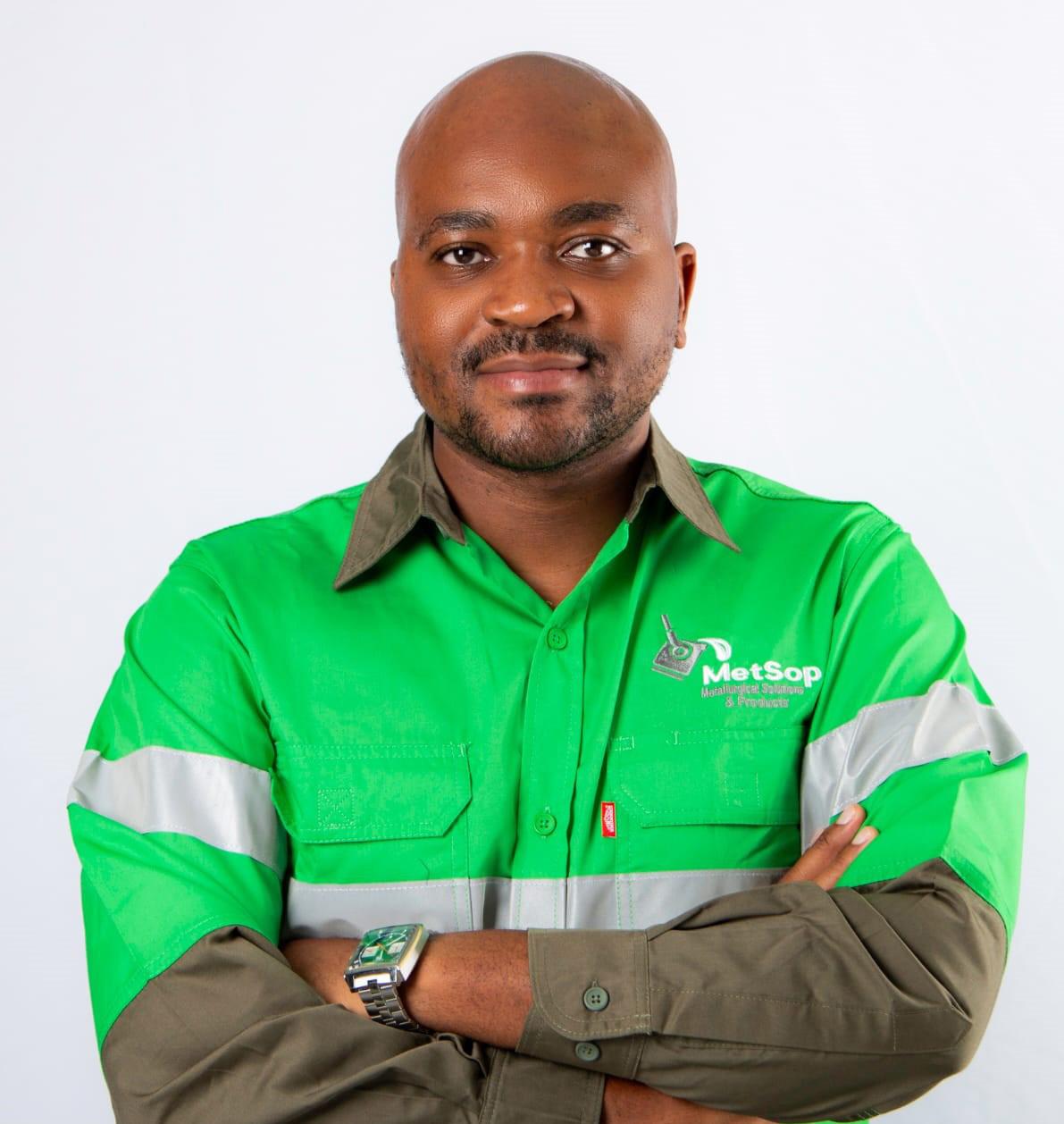
At Metsop, we’re not just shaping metals; we’re shaping the future of the metallurgical industry across South Africa and Sub-Saharan Africa. With a steadfast commitment to innovation, quality, and sustainability, Metsop stands as a beacon of excellence in the metallurgical landscape.
Our Vision:
To redefine metallurgical standards and
lead the industry towards sustainable growth, driving economic prosperity and environmental stewardship.
Trusted Partnerships:
We forge lasting partnerships with clients across diverse sectors, including mining, automotive, construction, and manufacturing. With tailored solutions and unparalleled expertise, we empower our clients to achieve their goals and surpass expectations.
Our Goals:
Metsop is dedicated to continuous improvement and technological advancement. Our goal is to set new benchmarks for efficiency, reliability, and safety, while minimizing environmental impact and maximizing value for our stakeholders.
Regional Reach:
With operations spanning South Africa and Sub-Saharan Africa, Metsop is at the forefront of regional development, driving progress and prosperity in communities across the continent.
Sustainability Champions: Sustainability is at the heart of everything we do. From responsible sourcing and resource management to waste reduction and energy efficiency, Metsop is committed to minimizing our environmental footprint and contributing to a greener, more sustainable future.
Leaders in Innovation:
Metsop thrives on innovation and forward-thinking. Through research, development, and collaboration, we harness the power of cutting-edge technologies to deliver transformative solutions that meet the evolving needs of our clients and the industry.
Join us on our journey to excellence and experience the unparalleled quality, reliability, and expertise that define Metsop. Together, let’s forge a brighter, more prosperous future for the metallurgical industry and beyond.
Driving Excellence as Operations Director at Metsop
My name is Ipfi Manenzhe, and I am honored to serve as the Operations Director at Metsop, a renowned metallurgical company operating across South Africa and Sub-Saharan Africa. My journey in the metallurgical field began after graduating with a Bachelor of Technology in Metallurgy from Vaal University of Technology. Following my education,
I embarked on a fulfilling career as a Metallurgist, where I gained invaluable experience and honed my skills over the course of several years. However, in 2019, driven by a deep passion for metallurgy and a vision for innovation, I together with my colleague made the bold decision to found Metsop. Since its inception, Metsop has rapidly grown into a leading player in the industry, thanks to our unwavering commitment to excellence and customer satisfaction. As an avid traveler, I find great joy in exploring new destinations and experiencing diverse cultures, which not only enriches my personal life but also broadens my perspective as a business leader. I am deeply grateful for the opportunity to lead Metsop and look forward to continuing our journey of success and growth in the years to come.
As the Operations Director at Metsop, a leading metallurgical company, my role is multifaceted and pivotal in ensuring the seamless functioning of our operational activities. I oversee all aspects of our metallurgical operations, from production processes and quality control to resource management and regulatory compliance. By developing and implementing strategic plans, I drive our company towards operational excellence, optimizing workflows and maximizing efficiency while upholding
the highest standards of safety and quality. I foster a culture of continuous improvement within the organization, constantly seeking out opportunities to enhance processes and streamline operations. Through effective leadership and collaboration with cross-functional teams, I strive to align our operational activities with the company’s strategic objectives, ultimately contributing to Metsop’s success and prominence in the metallurgical industry.


Office: +27 10 100 8436
Address: Unit 17, Celtis Business Park, Cnr Hoefyster and Harnas Street Stormill, Florida Extension 11 South Africa
Around the world and in South Africa new technologyrelated buzzwords abound – from smart technology to emerging technologies to edge computing and many more such things. While confusing in their scope and application to many of us less initiated, they all point to a transformation of many things as we know them; transformation that will be essential for South Africa if it is to maintain, for instance, a competitive manufacturing sector and the leading one across sub-Saharan Africa.
In a report written by a team of academics from the University of Johannesburg (UJ) the authors refer to how technologies change over time as improvements or radical new ways of doing things are found, creating space for what some term “emerging technologies”; a set of technologies that are novel, gain momentum and have the potential to create new economic sectors and impact positively on development goals.
Approaching from a different angle, Rudie Opperman, an engineering and training specialist for the Middle East and Africa maintains that like many other industries, manufacturing is undergoing a digital transformation that promises to change how it operates, create new business models, and deliver significant economic benefits. In this regard he says edge computing can potentially transform the manufacturing sector by integrating many aspects of the manufacturing process, including design, supply chain, and operations. Aligning South African manufacturing more closely with this global shift to edge technologies could take manufacturing in South Africa to a new level, Opperman suggests.
And in yet another approach to this myriad of new possibilities that are opening up, Macrocomm’s CEO, Sivi Moodley, emphasises triple-win solutions that harness technology’s transformative power. Given South Africa’s membership of BRICS, he does so within the context of unlocking South Africa’s
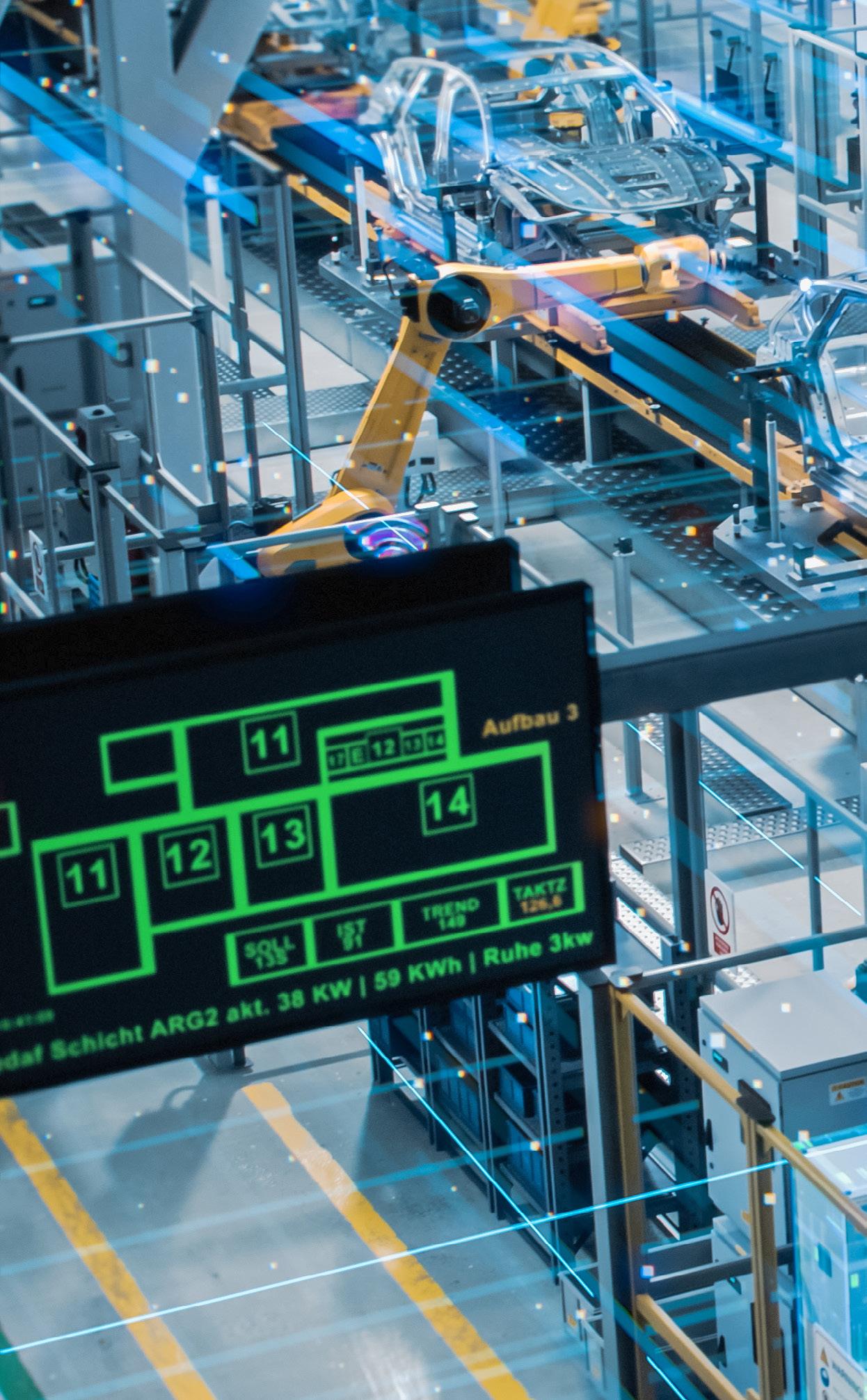

potential in this multi-national grouping. So, let’s unpack some of these and find out what they are all about.
The UJ report on emerging technologies transforming South Africa was written by a team from the UJ’s DSI/NRF/Newton Fund Trilateral Chair in Transformative Innovation, the 4th Industrial Revolution and Sustainable Development, which is co-funded by the National Research Foundation of South Africa and the UK’s Newton Fund. The lead author of this report was Prof Rebecca Hanlin, assisted by Dr Calory Larr Onyango, Dr Lebogang Semenya, Amanda-Leigh O’Connell, Robyn Williams, Dr Maty Konte and Dr Cyrielle Gaglio. The quantitative survey data was compiled
under the project ‘Frontier technology adoption in developing countries’ within the UJ-TRCTI led by Prof Erika Kraemer-Mbula and Prof Edward Lorenz.
The authors pose that technologies change over time as improvements or radical new ways of doing things are found, thus creating space for what some term ‘emerging technologies’. These technologies span a range of different types and are not limited to those that are digital, include high-tech components or are research and development intensive.
They argue that in South Africa a landscaping and assessment
of existing and future potential emerging technologies, to maximise the positive socio-economic and developmental impacts and mitigate against potential misuses and harms, is essential to ensure that future action complements existing interventions and is demand driven. As such, the FCDO-Eastern and Southern Africa Research and Innovation Hub engaged the UJ’s DSI/NRF/Newton Fund Trilateral Research Chair in Transformative Innovation, the 4th Industrial Revolution and Sustainable Development (UJ-TRCTI) to analyse and map emerging technology ecosystems in South Africa to gain an in-depth understanding of the landscape and context, enabling factors, risks, opportunities, and early precedents being set on use cases, governance and enabling environment.
This recognises the role that South Africa plays as a regional technology leader and its likely ability to influence how these technologies are developed and used across Southern Africa. Their report outlines the results of this landscape analysis and is based on an in-depth literature review, the analysis of a survey dataset of 262 firms in South Africa about their use of several emerging technologies, and over 20 key informant interviews across the academic, government and private sectors.
Their landscape analysis identified 20 emerging technologies being promoted, developed, deployed or used in South Africa. Of these, the top four can be divided between new emerging technologies (artificial intelligence and next generation health) and waning emerging technologies (mobile applications and e-commerce). These waning technologies are not disappearing but are becoming accepted and assimilated into processes and becoming a form of general-purpose technology. This, and the fact that the analysis has identified low-tech and high-tech emerging technologies being promoted, developed and used across all stages of the production lifecycle, means that a clearer definition of ‘emerging technology’ is needed. The authors make several recommendations to facilitate this.
According to the UJ team, disruptive technologies including advanced robotics, artificial intelligence (AI), big data analytics, cloud computing, the Internet of Things (IoT), smart sensors, augmented reality (AR) and virtual reality (VR), and 3D printing have begun to transform global manufacturing including South Africa’s. At the same time, precision agriculture, aquaponics and vertical farming are new technologies – not all digital – that are starting to transform the agricultural space in South Africa.
Such technologies are expected to result not only in greater efficiencies, leading to improved competitiveness, but also to trigger changes in traditional production relationships
among suppliers, producers, and customers and, in the case



years of

From 10-12 April, The City of Cape Town hosts WTM Africa for it’s 10th edition. The event is Africa’s leading and only B2B exhibition for both inbound and outbound travel and tourism markets, presenting a diverse range of destinations and industry sectors to travel professionals across the globe.
Through its industry networks, global reach, and regional focus, WTM Africa creates personal and business opportunities providing our customers with quality contracts, content, and communities.
• One-on-one meetings
• Speed networking
• International media
• Content sessions
• Engaging workshops
• Associations and media partners
• Ministerial round table
• Networking events & experiences
• Hosted buyer program
• Annual Trend report
• Cutting-edge systems & platforms
• Product launches
• Sister suite of niche events
According to Opperman, edge computing is a distributed computing model that brings computing resources closer to where data is generated and processed, such as at the network’s edge, rather than in a centralised data centre. This technology enables devices and systems to operate faster and more efficiently by reducing the latency and bandwidth demands associated with transmitting data to a central location for processing. As a result, edge computing can help manufacturing companies in South Africa overcome some of the challenges they face in today’s increasingly connected and complex world, he says.
More than any other industry, manufacturers rely on real-time analytics and make use of predictive maintenance that helps eliminate downtime and reduce costs associated with unplanned repairs. With edge computing, decisions can be made in real time, without waiting for data to be sent to a central location for analysis. This can help manufacturers improve their operational efficiency and reduce downtime, which can significantly impact their bottom line. Another benefit of edge computing is that it allows IoT devices to store, process, and analyse data locally. Also, security, both in terms of securing physical premises and cybersecurity, stands to gain a lot from edge computing among other advantages.
However, among the challenges associated with implementing edge computing in manufacturing environments, is the need for specialised skills and expertise to design, implement, and maintain edge computing solutions. This can be particularly challenging for small and medium-sized manufacturers in South Africa, who may need more resources to invest in these skills. Another challenge is the need to integrate edge computing solutions with
existing systems and processes, which can be complex and time-consuming. But these challenges can be overcome, says Opperman.
Finally, Sivi Moodley explores with a view to unlocking South Africa’s potential within BRICS, how IOT integration can propel economic growth. He argues that in the realm of international economic co-operation, the BRICS alliance – Brazil, Russia, India, China and South Africa – holds substantial potential. Among these member countries, South Africa stands out with unique strengths and challenges that position it as a promising contender for technological advancement. South Africa’s diverse economy and abundant natural resources have already driven significant strides in technology adoption across various sectors. From finance and healthcare to agriculture and manufacturing, the transformative impact of technology is evident, he says.
Through the deployment of the Smart Made Simple IOT solutions provided by his company, companies operating in sectors such as energy, infrastructure development and the digital economy can prosper and also gain a competitive edge both locally and internationally. In the endeavour to bolster South Africa’s competitiveness, significant strides have been taken to prepare businesses and the wider population for effective utilisation of IOT technology, says Moodley. Vital network drivers such as Sigfox, LoraWan and NB-IOT are readily accessible within the country. – Staff Writer
– Staff Writer
At VEA, we're on a mission to transform road maintenance and civil works, tackling challenges head-on to create smoother journeys for all. Our team thrives on exceeding expectations, delivering service that sets us apart.
Dedicated to inclusivity, we actively participate in B-BBEE initiatives, uplifting communities and forging a brighter future. As proud Level 1 B-BBEE participants with 51% Black Ownership, we're leading the charge towards equality.
We champion employment equality, fostering a culture of equal opportunities where everyone can thrive. Our vision? To ensure every person enjoys their rights and freedoms, promoting workplace equality and gender empowerment. Women, a designated group, find their place in our workforce with our commitment to equitable representation.
Partnering with industry giants like the South African National Roads Agency and Gauteng Department of Road and Transport, we deliver superior rehabilitation and maintenance services. Our ethos? Exceptional quality, honesty, teamwork, and innovation.
From humble beginnings, VEA Roads has blossomed into a powerhouse, attracting a diverse clientele. With contracts exceeding R4-billion, our growth speaks volumes, creating opportunities that resonate across communities.
Join us on our journey as we pave the way to excellence, one road at a time.
Thoko MANAGING DIRECTOR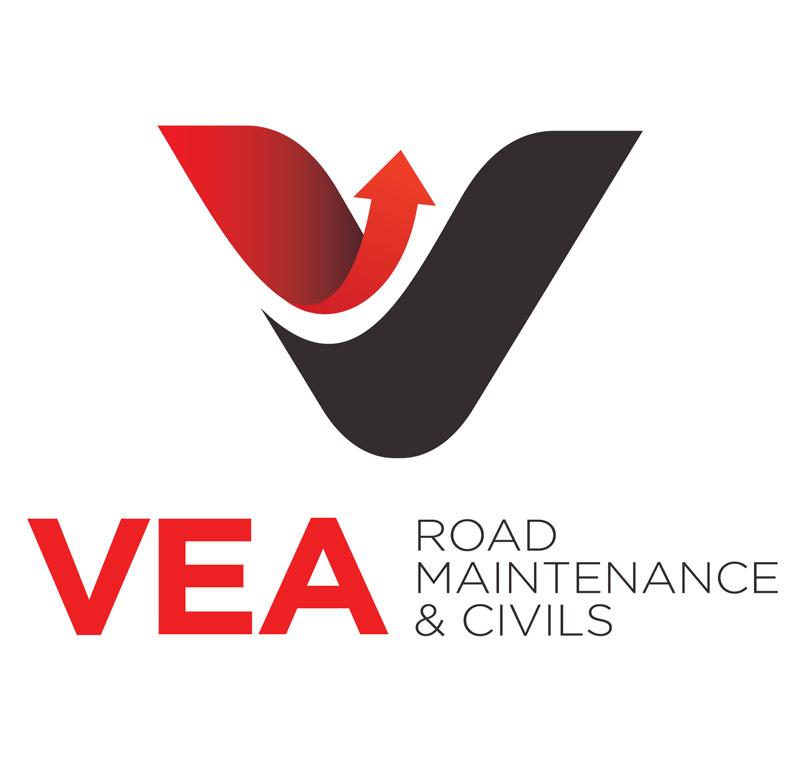



Welcome to the forefront of power distribution innovation with ArmCoil’s Underground MV Miniature Substation. This editorial offers an in-depth exploration of the technical aspects that define ArmCoil’s excellence of Medium Voltage Substations.
ArmCoil, a distinguished player in the power distribution sector, has earned a legacy of excellence by delivering high-quality and reliable products. Our commitment to addressing dynamic challenges has established us as a trusted name in the industry.
The core of the Miniature Substation is a result of engineering precision, with robust MV and LV Cubicle Assemblies forming the foundation for exceptional power distribution performance.
Technical Component Breakdown:
• Weld on Oil Gauge 100mm: A vital component for monitoring oil levels, contributing to the efficient functioning of the substation.
• Thermometer Type F036: Critical for continuous temperature monitoring, providing early indicators of potential issues.
• Double Row Radiator: Engineered for effective heat
dissipation, ensuring optimal performance under varying conditions.
Installation and Maintenance Efficiency:
• Mini-Sub Lifting Lugs: Facilitating easy installation, relocation, and maintenance, reducing downtime and operational disruptions.
• LV Cubicle LED Light: Enhancing visibility and accessibility for seamless monitoring processes, contributing to overall efficiency.
• NERPRO Integration: Operational Precision:
• Explore the integration of NERPRO – elevating operational precision with fail-safe mechanisms, undervoltage resilience, harmonic filters, and a sophisticated user interface.
The technical aspects of the substation’s compact size and low-maintenance design, translating into cost savings in installation expenses and ongoing operational costs.
Safety Features Integration:
• Emergency Stop Feature: Delve into the intricate mechanisms enabling immediate shutdown in critical situations, preventing accidents or hazards.

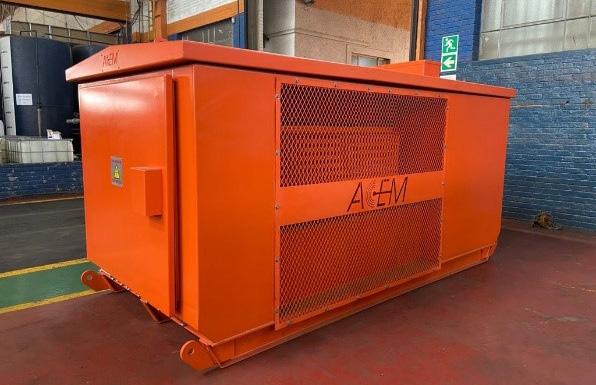

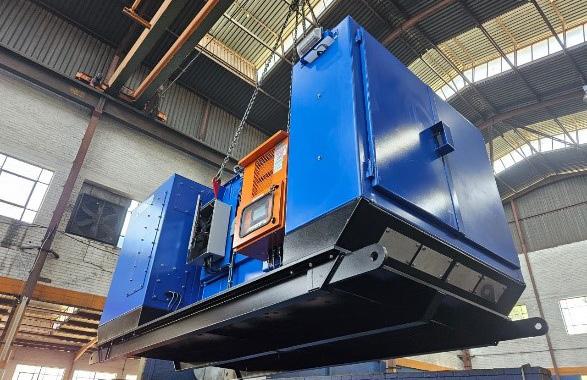
• Pressure Relief Device (Type T50): Explore the engineering brilliance behind the device designed to safeguard against internal pressure build-up.
• Safety Interlocks and Grounding: Technical insights into provisions ensuring controlled access to high-voltage compartments and protecting against electrical faults.
Comprehensive Protection Measures:
• Overcurrent and Short-Circuit Protection: Explore the technical intricacies of protective devices preventing damage to equipment and mitigating potential fire hazards.
• Thermal Monitoring (Thermometer Type F036): A closer look at the functionalities of continuous temperature monitoring for critical components.
Fire-Resistant Construction and Insulated Barriers:
• Fire-Resistant Materials: Technical insights into construction materials chosen for fire resistance.
• Insulated Barriers and Shields: Exploration of insulated barriers and shields designed to prevent accidental contact with live elements and reduce the risk of electric shock.
In conclusion, ArmCoil’s Underground MV Miniature Substation, enhanced by NERPRO integration, stands as a technological triumph. This amalgamation of precision engineering, advanced components, and a commitment to safety and efficiency positions our MV Substation at the forefront of innovation, shaping the future of power distribution.
For further enquiries, please contact us at 011 763 2351, visit www.armcoil.co.za, or email sales@armcoil.co.za


The South African government has provided “housing opportunities” (either RDP houses or serviced plots) to some 5 million households since 1994. An additional more than 2.3 million households are still on waiting lists as part of the housing backlog, many of them living in shacks in informal settlements. Now a revolutionary new product developed for local conditions could speed up and help wipe out this backlog - namely 3D printed homes.
In January last year this revolutionary technology developed here on home soil produced the first 3D-built house in South Africa. It was built on campus in just 8 hours by staff and students of the Faculty of Civil Engineering and the Built Environment of the University of Johannesburg (UJ), in collaboration with the Department of Science and Innovation (DSI) and the KwaZuluNatal Department of Human Settlements. For this initiative the university used a printing machine costing R6 million. The initiative is funded by the Department of Science and Innovation.

Compare 8 hours and no material wastage to the many weeks it takes to build a standard RDP house with plenty of wastage. That is revolutionary indeed.
For the uninitiated, according to Wikipedia 3D printing or additive manufacturing is the construction of a three-dimensional object from a CAD model or a digital 3D model. Simply put, 3D printing technology allows for physical objects to be built from digital or computer models in various applications, including the construction of housing.
It can be done in a variety of processes in which material is deposited, joined or solidified under computer control, with the material being added together (such as plastics, liquids or powder grains being fused), typically layer by layer. 3D printing or additive manufacturing is a process of making three dimensional objects from a digital file. The 3D printing process saves time and reduces material wastage.
In the additive process of 3D printing an object is created by laying down successive layers of material until the object is created. Each of these layers can be seen as a thinly sliced cross-section of the object. 3D printing enables you to produce complex shapes using less material than traditional manufacturing methods.
As a new technology, 3D-printed homes is still in the infant stage, yet developing countries such as Mexico have already been experimenting with 3D-printed homes for homeless indigent citizens. Experimental 3D homes have also already been constructed in India, the Netherlands and in Austin, Texas. Also, in October 2021, the US-based construction companies Lennar and ICON announced plans to build a complete 100-home neighbourhood using only 3D-printing technologies. Now South Africa has joined this exclusive club with 3D print technology adapted specifically to address the domestic housing backlog.
However, some delays are hampering the process in South Africa. For one, this construction method still needs to undergo tests with a view to getting regulatory approval. Last year, proposals had been submitted to Agrément to get approvals for the new construction method and materials, Agrément being a regulatory entity of the Department of Public Works and Infrastructure.
Amongst its functions is ensuring that non-standardised construction-related products, especially for human use, meet regulatory requirements and are fit for purpose, by testing and providing certification for the products. Near the end of 2023, Dr Ntebo Ngcobo, the head of the Department of Civil Engineering Technology at UJ, was quoted as saying that the 3D house printing technology would undergo a variety of stress tests, including the product’s vulnerability or resistance to water penetration and fire, the acoustics of the buildings, and their structural integrity.
While the UJ project was waiting for regulatory approval, a pilot project with the KwaZulu-Natal Department of Human Settlements to print more test buildings in KwaZulu-Natal was in the pipeline. A community centre was to be built in the uMhlathuze Municipality, before more houses would be built. According to Ngcobo at the time, the pilot could be built without the approval from Agrément, but that there had been a delay in that the KwaZulu-Natal Department of Human Settlements had asked for a postponement to around August. However, by August it still had not commenced.
However, at the launching announcement of the pilot 3D house printing project, Higher Education, Science and Innovation Minister Blade Nzimande was full of praise for this new technology saying it could provide a solution to the housing crisis in the country. “It is a quick way to build good quality houses and the whole process also has a much smaller impact on the environment,” he said.
According to Nzimande, in the midst of the housing backlog crisis, the Department of Human Settlements has been making attempts to streamline the housing delivery processes. He said in South Africa, there have been challenges of limited uptake of innovative building technologies in house construction. Research has shown that innovation has changed how homes are made in many countries, their performance, affordability, and functionality.
“Although the South African building regulatory environment is not prescriptive in the materials and products used in construction, there has been a slow uptake of innovative building products compared to that in other countries. There are currently no international or South African National Standards to evaluate the performance of these products,” said Nzimande.
“Using innovative building products in South Africa has significant potential economic ramifications, including eradicating the housing backlog, providing better-quality housing and construction products, and possibly reducing the life cycle cost of the houses. South Africa has the potential to deliver more than 160,000 and 80,000 homes per year in the governmentsubsidised and private sectors, respectively, as evidenced in the 2008/09 financial year.
“However, since 2009, the delivery of government subsidised houses has been dropping at an alarming rate, indicating serious intervention is required by government and private developers in the home-built environment. This, therefore, requires a change: an exploration of how innovation, in its broad context, can be utilised to examine the structure, characteristics, and technologies available to accelerate the delivery of houses.”
However, Nzimande said, the domestic construction industry is well-positioned to refine its business-as-usual productivity
and efficiency models and embrace technological advances such as building information modelling, construction 3D printing, and augmented reality.
According to Nzimande, in response to this challenge, the Department of Science and Innovation that is part of his portfolio, as the main project sponsor partnered with the UJ to deliver on this multi-disciplinary project. The department appointed the UJ School of Civil Engineering and The Built Environment to undertake a research project on 3D construction printing technologies and pilot the technology in the construction of housing. Various industry stakeholders were identified as key support to the project’s success, including -
• Mampeule Foundation which provided a R5million grant over five years to postgraduate students pursuing studies in innovation in the built environment;
• AfriSam, the cement supplier assisted UJ with all cementitious products required for the project and the;
• KZN Department of Human Settlements committed to provide serviced sites for the demonstration and building of 10 houses in Ethekwini Municipality.
According to Nzimande, the construction 3D printing pilot project was first implemented in April 2022 and is expected to conclude on 31 March 2024. In partnership with the KwaZuluNatal (KZN) Department of Human Settlements, Phase 3 of the project will entail the pilot implementation of construction 3D printing of full-scale houses in KwaZulu-Natal with an identified construction SMME to implement the physical construction. This, however, is the pilot project that is running behind schedule.

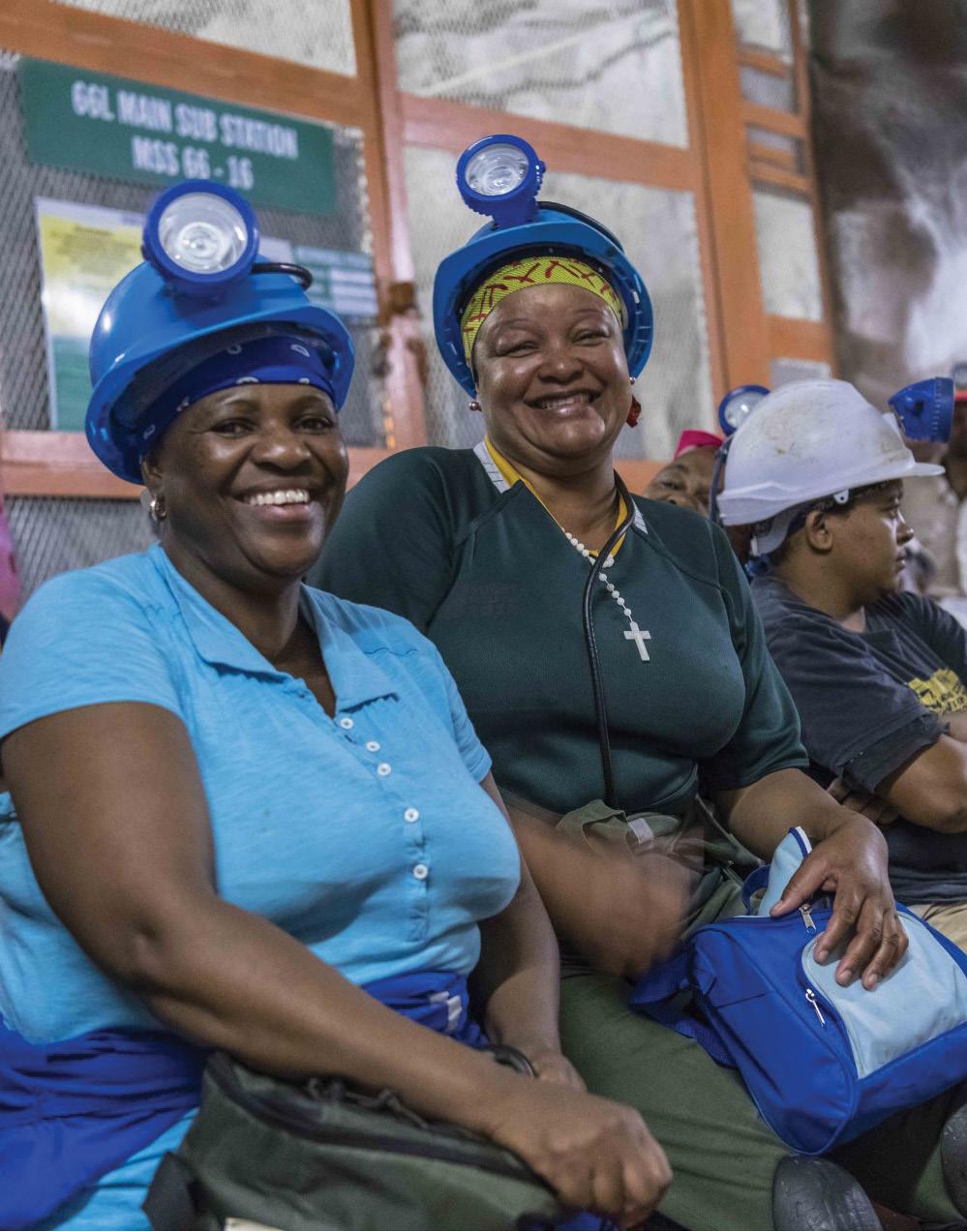
For 73 years, Harmony Gold Mining Company Limited has been driven by the need to create and maintain a workforce that accurately represents the diversity and inclusion of the South African population. We continue to recognise, invest in and put women at the forefront of our business.
Today we stand hundreds strong. Tomorrow, thousands more!
For more information visit harmony.co.za
Nonetheless, through this project, the KZN Department of Human Settlements plans to print a social building first – for example, a community centre – and then print houses later, said Nzimande.
“This will allow the construction team to demonstrate the technical viability of 3D printing on one socially impactful structure before building homes. The project site for construction is located in uMhlathuze Municipality, Empangeni, KwaZulu-Natal,” he said. The site has been serviced with adequate water, sewer reticulation and electricity connections.
Nzimande said that as part of the agreement with the KZN Department of Human Settlements provision has been made –
• To conduct detailed social perception studies (pre, during and post-construction);
• To detail life-cycle costing of 3D printed houses based on local material and labour costs;
• To identify alternative sources of 3D local materials after testing the suitability of the materials; and
• To provide policy and implementation guidelines; and conduct skills transfer to SMMEs.
“Broadly speaking, construction 3D printing will ensure many benefits to the South African housing construction industry, particularly where mass-scale house customisation is required,” said Nzimande.
According to him, some of the benefits include:
High precision and various complex typologies for the end user. The material mix design is consistent, and the structure’s integrity is ‘lab-based’, giving a structure with the desired
structural performance requirements and durability.
• Material quantities required for the house construction are controlled and mixed in the right proportions with limited waste materials;
• The delivery rate is constant (with the potential for 24hour production if required), while maintaining the same production quality. A higher construction speed can deliver houses much faster;
Since the houses are printed on site, the logistics and travelling costs are reduced;
• As technology in the field advances, construction 3D printing will provide a platform for creativity and entrepreneurship development and has potential to attract youth and women into the industry.
A number of issues remain that need to be addressed before this technology can be implemented on a large scale. Nzimande said that some of these issues were still being researched, and included:
• Education of professionals, mainly architects and engineers to promote and adopt construction 3D printing technologies. Such education needs to start at tertiary institutions and through continuous professional development;
• High capital outlay in order to acquire construction 3D printers;
• Manufacturing of construction 3D printers that can be used in more rugged geographic topographies, particularly in rural areas; and
• Considering of perceptions of beneficiaries, owners, and government on the performance of houses built through innovative building technologies in general and construction 3D printing in particular.

However, an upbeat Nzimande said despite all these critical issues that are yet to be addressed, he believes that construction 3D printing will significantly alter and positively disrupt how human settlements will be delivered in South Africa. It could significantly contribute to the current programmes of the Department of Human Settlement, in the implementation of the Comprehensive Housing Plan (CHP) which aims at eradicating informal settlements in South Africa in the shortest possible time.
– Staff Writer












Bell ADTs can be fitted with the latest and most advanced PDS/CAS* technology on the market to comply with mining regulations and ensure the safety of operators, pedestrians, and other mobile equipment on the job site.

At the same time, owners have the flexibility to choose a PDS/CAS* solution that best suits their needs and budget, and the option of fitting this solution to a new PDS/CAS*ready Bell ADT, or an older Bell ADT retrofitted with a PDS kit.
















Contact your nearest Bell dealer today to enquire about upgrading your Bell ADT.
























































The saying goes, out with the old and in with the new. When it comes to industrial revolutions – perhaps more aptly the evolution of new technological innovations, advances and applications – discarding the old is not really appropriate. For each industrial revolution builds on its predecessor without which the new revolution would not be possible.
As we still navigate our way through the intricacies and dynamics of the mind-blowing 4th Industrial Revolution (4IR), people have for some time now already been talking about embracing the 5th Industrial Revolution (5IR). However, the concepts of both the 4IR and 5IR go much further than what is implied by “industrial” – it also embraces social sciences, physical science, human development, medicine and a host of other disciplines and terrains.
The concept of the 4th Industrial Revolution was coined in 2016 by Klaus Schwab, the founder of the World Economic Forum (WEF), in a book of the same name. In his book it is described as follows: “The Fourth Industrial Revolution creates a world in which virtual and physical systems of manufacturing cooperate with each other in a flexible way at the global level”.
But the 4th Industrial Revolution’s scope ranges far wider than just smart and connected machines and systems or traditional industries. Occurring simultaneously within the same time span and technological dynamic are layers of innovative new developments in areas ranging from nanotechnology to gene sequencing, from renewable energies to quantum computing, from sustainable mining to clean energy.
To fully understand where we are now with the 4IR and also the
emerging 5IR, one should look back at the preceding revolutions.
It is against this background that we are now hearing more and more about the 5th Industrial Revolution and how it will change the business landscape and affect our lives. To make more sense of the 5IR, Regenesys, one of the fastest growing and leading business schools in Africa that provides internationally recognised undergraduate and postgraduate programmes, has published an informative article about 5IR on their website. A slightly edited version of this article is reproduced here with kind permission from Regenesys:
Every day we read about the Fifth Industrial Revolution. At first glance, it just seems like a new, improved version of the Fourth Industrial Revolution. The media refer to it so frequently, that we all assume we know what it is, and we never really pin down what it is and how it affects us.
The term Industrial Revolution was used by the 19th century economic historian Arnold Toynbee to describe Britain’s economic development from 1760 to 1840.
Let’s start with what we mean by Industrial Revolutions. An industrial revolution has two components. The first is the creation of new technology – for example, the invention of the steam engine. The second is a change in production brought about by the technology – for example, steam-driven weaving
Mechanisation Electrification Automation and Globalisasion Digitalisation Personalisation
Occurred during the 18th and 19th centuries, mainly in Europe and North America
Steam engines replacing horse and human power
Introduction of mechanical production facilities driven by water and steam power
From the late 1800s to the start of the first World War
Production of steel, electricity and combustion engines
Division of labour and mass production enabled by electricity
The digital revolution occured around the 1980s
Computers, Digitisation and the internet
Automation of production through electronic and IT systems
Start of the 21st century 2nd decade of the 21st century
Ai, Robotics, IoT, blockchain and Crypto Innovation Purpose and inclusivity
Robotics, artificial intelligence, augmented reality, virtual reality
Deep, multi-level cooperation between people and machines. Consciousness.
looms. Each time a new technology is created, the manufacturing [making] process ratchets up a notch. As the revolutions become more complicated, multiple new technologies are discovered, and the process accelerates.
The table on page 33 shows the sequence of the five industrial revolutions. You will see how each revolution sets the scene for the next one. Note also the time period of each revolution.
The first revolution mechanised the textile industry. The second industrial revolution gave us the assembly line, high volume industrial production and high mass consumption. The third allowed information to be captured in digital format and to be cost-effectively transformed, manipulated and transmitted. The fourth industrial revolution has provided us with robotics, artificial intelligence, augmented reality, and virtual reality. There were nearly two centuries between the first and second industrial revolutions.
Along the way, we picked up globalisation, climate change, environmental degradation and multinational conglomerates with annual revenues larger than the GDP of many countries. More efficient production has meant increased pollution, reckless consumption of non-renewable resources, and ever-improving quarterly profit statements.
The Fifth Industrial Revolution (5IR) can be summarised as the combination of humans and machines in the workplace. But
this is vastly oversimplified and does not even begin to explain the magnitude and complexity of the change.
Marc Benioff, the founder of Salesforce sees it this way: “I see a crisis of trust in technology,” he told the World Economic Forum. “in the Fifth Industrial Revolution, we’re going to have to have… a chief ethical and humane use officer. Are we using these technologies for the good of the world? You can’t do business in the Fourth Industrial Revolution without the trust of your employees and your customers and partners.”
The third and fourth revolutions were hard on humans and hard on the environment. Previous generations had to adapt their lifestyle to what the machines could do. The Fifth Industrial Revolution is different. Human beings are now front and centre in the production process. Here is a non-exhaustive list of some of the changes that are becoming commonplace in the Fifth Industrial Revolution
• Many more people will regularly work remotely.
• Menial administration will be performed by machines.
• Implantable technologies for health and other purposes will become widespread, leading to a healthier, longerliving population.
• 3D printing will become more and more prevalent.
• Chatbots will become a routine part of the customer experience.

User and entity big analytics
App- and web-enabled markets
Internet of things
Machine learning
Cloud computing
Digital trade
Augmented and virtual reality
Encryption
New materials
Wearable electronics
Distibuted ledger (blockchain)
3d Printing
Autonomous transport
Stationary robots
Quantum computing
Non-humanoid land robots
Aerial
Source: future of jobs survey 2018, World Economic Forum Technologies by proportion of companies likely to adopt them by 2022 [projected].
Questions that have still to be fully answered include:
• How will white-collar jobs change? Will they disappear completely, how will workers have to reconfigure their roles as routine work becomes automated?
• How will we, as a society, respond to this? Values, institutions, a sense of identity.
• Which countries will be affected the most? North / South What will happen in countries with low internet adoption? Southern Africa.
• What will happen to the costs of goods and services?
• How will organisations build new trust relationships and psychological work contracts, and how will all of us unlearn old habits and gear up for this new milieu?
A negative way of looking at this is to complain that we are rendered obsolete by the very machines we create. Robots will ultimately become smarter than humans and then there’s no stopping them. They will take over the world, and we will be left to do nothing –we will become redundant.
The positive way of looking at this is to appreciate how AI and robotics significantly alter how we work, play and live by replacing repetitive and highly complex tasks and assisting us with decisionmaking. Less drudgery at work and more time to spend on important things.
If we look at the previous revolutions, they have each brought some dislocation, but they have improved the quality of life for all. We
have no reason to suspect that the Fifth Industrial Revolution will be different.
The World Economic Forum produced the “Future of Jobs Report” in 2018. The graph above depicts their view on the adoption on 5IR technologies.
And as the world of work changes, the table below depicts how this will affect existing jobs and create new ones.
Look at your own organisation and ponder on the effects on you and your colleagues around you. Look at the new roles – see which of those roles is a natural career progression for you.
Let’s explore further and consider the graph below and the effect on the workforce:
Modified compositionof value chain
Reduced current workforce due to automation
Modified the locations of operation
Expanded use of contractors doing task specialized work
Expanded current workforce
Source: Future of Jobs Survey 2018, World Economic Forum
Projected (2022) effects on the workforce of current growth strategy, by proportion of companies

What are the implications of all of this? It is highly probable that you and I will work with robots and smart machines. The Internet of Things (IoT) and big data will provide information and take decisions that will help us work better and faster. This change had started in the 4IR, but it will become more commonplace as we move into the future.
This does not, however, mean that human beings become redundant. There will always be a role for humans, but it will demand significant changes from us. Think of the First Industrial Revolution, where a large number of people moved from an agricultural setting to having to work in factories where they had to set and operate machines. We will all have to unlearn old ways, absorb new skills and take on new roles. Now, more than ever human intuition and problem-solving capabilities are becoming essential for sustainable economic production.
Elon Musk, CEO at Tesla, has admitted that “excessive automation” at his company was a mistake, tweeting that “Humans are underrated.”
There is no doubt that robots are much more consistent than humans and better at repetitive precision work. But they’re inflexible and incapable of the adaptability and critical thinking that define us as humans. A machine cannot [yet] pick up the nuances of language, culture and body language. But when

robots work together with people, they provide invaluable collaboration and make our work lives better. Universal Robots uses the term “cobots” for collaborative robots to emphasise the importance of people in robotic technology.
“Industry 5.0 will make the factory a place where creative people can come and work, to create a more personalised and human experience for workers and their customers,” says Esben Østergaard, Universal Robots chief technology officer and co-founder.
The Fifth Industrial Revolution will see much more advanced collaborative interactions between humans, machines, processes and systems for maximum performance optimisation.
Although we might not be exactly sure of how the Fifth Industrial Revolution will change our individual lives, we should be fully prepared to accept that it is unavoidable. Typewriters disappeared when word processors became ubiquitous. The big social and economic changes of an industrial revolution will sweep all along with it.
Here are some signals for you to watch out for as we progress ever deeper into the Fifth Industrial Revolution. They are not exhaustive, but they are important beacons showing the way. Networked sensors will collect data everywhere, from your smart house to autonomous manufacturing plants, to traffic in


the street. This will create huge amounts of data about every aspect of human life. This, in turn, will be used to improve systems, processes, manufacturing and delivery. When you discard an empty milk container in your smart waste bin, the entire value chain – right up to the dairy – will be informed and will adjust production accordingly. Now multiply this by thousands of items in thousands of households, to see the combined effects. It is only possible through networked sensors.
Visualisation and modelling of processes like production lines will make every stage of a value chain open to inspection. This will be indispensable for managing and personalising future products and product lines.
Tracking systems will improve real-time production tracking from the checkout in the retailer, right back to the start of the production process. Constraints, unnecessary inventory and delays will be instantly visible. This assists with the reduction in material wastage, theft prevention, and prevention of mismanagement of assets when coupled with technologies like IoT and machine learning.
Virtual training is where the trainee learns a specific task or skill in a virtual or simulated environment. This will explode in the near future because it provides a safe and accurate yet cost-effective environment for training drivers, pilots,
firefighters, medical professionals, etc., without exposing them to the dangers and risks they might face in real venues or without imposing risk to others. Virtual training creates a skilled workforce without risking productivity or endangering a human worker.
Smart sensing will involve using the human brain as the source of signals. Special headsets effectively capture brain activations and can be used for a wide range of tasks, such as controlling a robotic arm, equipped with an instrument, to perform a certain task.
The Fifth Industrial Revolution will be a time of excitement and anxiety. We will be able to do and experience things that past generations could only dream of. But we will also have to leave behind, cherished skills, practices and mindsets.
The Fifth Industrial Revolution has the potential to initiate a new socio-economic era that closes the gaps between the “top” and the “bottom,” creating infinite opportunities for humanity, and for a better planet.
For more about Regenesys or its articles, follow this link: https:// www.regenesys.net/


With the Democratic Republic of Congo (DRC) being a key focus of Africa’s mining sector, the Investing in African Mining Indaba in Cape Town recently provided authorities with a good opportunity to update the mining fraternity on regulatory developments.
There was particular interest at the Mining Indaba in the presentations by the Regulatory Authority for Subcontracting in the Private Sector (ARSP), according to Dominique Sambwa, geological consultant and chairman of SRK Consulting (Congo). The ARSP is a government body set up in terms of the 2017 mining law to manage the rules relating to subcontracting by the private sector.
“The subcontracting regulations require that companies serving the mining sector must be locally based and have at least 51% ownership by Congolese citizens,” said Sambwa. “The Indaba allowed the ARSP to update many foreign stakeholders on how this plan is being rolled out, and what it means for foreign-based service companies working in the DRC.”
Vis Reddy, chairman of SRK Consulting (South Africa) and Africa lead for SRK Global, highlighted the importance of distributing the benefits of mining to local businesses and communities. This process strengthened the local economic ecosystem on which mining relies, while also building the local skills base and diversifying industrial activity – enhancing mining’s contribution to long-term sustainability.
“It was useful for delegates to hear input directly from the ARSP Commission, including their insights into how these localisation policies had been historically implemented in other parts of the world – including Europe and the US,” said Reddy. “Mining’s socio-economic contribution to host countries has been a prevailing theme at the Indaba, and it is encouraging to see the enabling strategies now being implemented.”

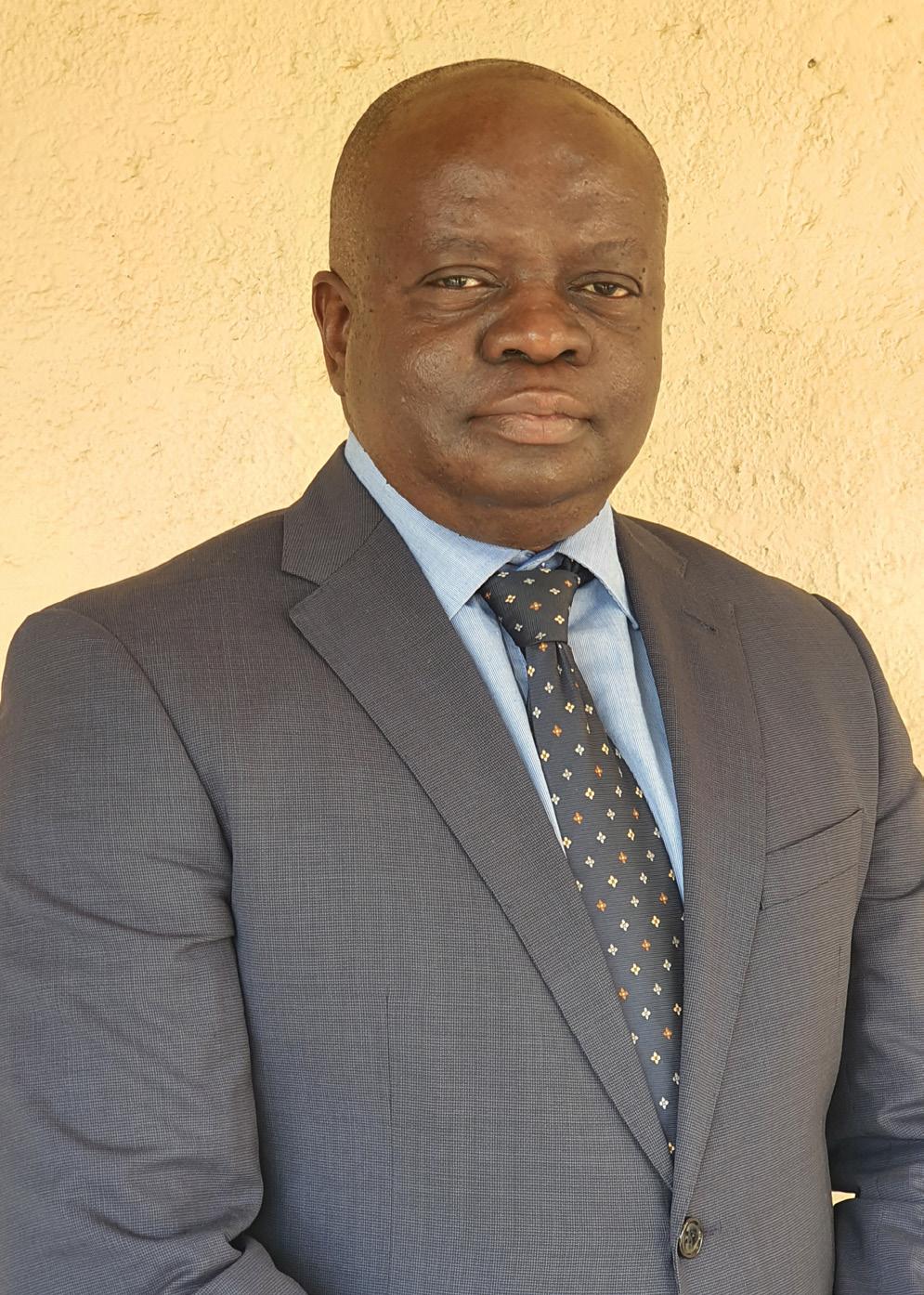
SRK Consulting has had an engineering consultancy practice in Lubumbashi for over a decade, managed and staffed by experienced local engineers and scientists. The practice has for some time been majority-owned by Congolese shareholders, providing valuable in-country support to mining companies. SRK Congo also operates a strategic initiative with partner practices SRK South Africa and SRK China to serve Chineseowned mining companies.
Sambwa noted that there are new ARSP taxes provided for by legislation, which will be used partly to support the development of local companies in establishing ventures in collaboration with foreign partners. The regulations will lead to more foreign service companies looking for Congolese partners, but the lack of capital for local firms to buy into joint ventures is likely to be a factor that inhibits progress.
“It is anticipated that the taxes levied by the ARSP will contribute to efforts to build the capacity of local companies to partner
with outside companies,” he said. “This assists foreign investors to enter this market by working with Congolese businesses and professionals who understand the local market, opportunities, processes and general corporate culture.”
In addition to the new subcontracting regulations, he highlighted two other crucial outcomes of the 2018 DRC mining law. The one was to dedicate a portion of revenues generated by a mine to the development of local communities – by contributing to community plans for economic sustainability through initiatives in agriculture and other sectors.
“The other change that mining companies need to understand is the Cahier de Charge, which requires that mines engage formally and effectively with local communities when setting development priorities and implementing these initiatives,” he said. “Through our experience in the sector and our expanding services, we have been able to pioneer successful projects in this regard with our clients operating in the DRC.”

Susa Maleba noted that there was also considerable scope to develop renewable energy sources in the DRC – which would help mines to reduce their carbon footprint. This potential included hydroelectric and solar power, which could be implemented on a localised basis close to mining sites. Infrastructure improvements were still required on road and rail networks to streamline supply chains and reduce the cost of doing business.
SRK Consulting is an independent, global network of over 45 consulting practices on six continents. Its experienced engineers and scientists work with clients in multi-disciplinary teams to deliver integrated, sustainable technical solutions across a range of sectors – mining, water, environment, infrastructure and energy.
For more information, visit www.srk.co.za
 SRK Congo mining engineer and country manager
SRK Congo mining engineer and country manager


As the world transitions to clean energy, sustainable mining practices have increasingly come under the spotlight. The preeminent international mining conference, the Investing in African Mining Indaba held each year in Cape Town, says sustainability continues to be at the heart of the mining industry, and there has been a substantial increase in the attention paid to its socio-economic and environmental impacts.
“It is undeniable that metals and minerals are critically important to the technology and infrastructure needed to achieve sustainable development goals, but it is imperative that these natural resources are mined and used responsibly. Thus, mining companies need to adapt to higher standards of responsibility whilst under greater scrutiny and increased consumer awareness,” say those in charge of the Mining Indaba.

And many mining companies have been doing just that. Leading the way towards a new era of sustainable mining over the past few years, has been South African and global mining giant, Anglo American.
“The mining industry is playing a considerable role in helping the world decarbonise, both through our own emissions footprint and the metals and minerals that we produce that are critical to low carbon energy and transport systems,” says Duncan Wanblad, Anglo’s Chief Executive. At the centre of Anglo’s own sustainability drive is a programme called FutureSmart MiningTM.
The company says its innovation-led approach to sustainable mining is integral to building an industry that has a minimal physical footprint, that goes beyond carbon neutral and works in
partnership to achieve a greater goal. As part of its Sustainable Mining Plan, Anglo American is focusing on step-change innovations centred around technology, digitalisation, aand sustainability, which it says go hand in hand.
“These are the step-change innovations that will transform the nature of mining – how we source, mine, process, move and market our products – and how our stakeholders experience our business. It is about transforming our physical and societal footprint.
“We envisage a much-reduced environmental footprint from new ways of mining, including by using a number of precision mining technologies and data analytics, while our collaborative approach to regional economic development and our ambitious global stretch goals, aimed at delivering improvements to areas such as health and education, are at the heart of how we will create truly sustainable and thriving communities.
“In order to live up to our Purpose, we are changing the way we operate through smart innovation that connects technology, digitalisation and a holistic approach to sustainability,” says Anglo. Central to this is Anglo’s FutureSmart MiningTM.
Anglo says there are primarily four concepts underpinning a new way of mining. Through technologies and digitalisation, it envisages these four concepts for the future of mining: Concentrating the Mine, the Water-less Mine, the Modern Mine, and the Intelligent Mine:
Concentrating the Mine™ is looking to address the need for increased precision in mining, with minimal energy, water and
capital intensity. Anglo is applying technologies that more precisely target the desired metals or minerals, delivering greater than 30% reductions in the use of water, energy and capital intensity, and producing less waste in the process, in line with its overall trajectory towards carbon neutral mining. This includes coarse particle recovery, bulk sorting and ultrafine recovery.
Anglo American has long shown itself to be a leader across many fields and the company says such leadership is called for again as society changes with and around us. Mining must play its part to address the environmental challenges of a carbon-constrained world and society’s wider expectations of us as enablers of change, while we continue to meet the evergrowing demand for our products.
The company says its Sustainable Mining Plan is designed to tackle many of these challenges, both environmental and social, and it is making encouraging progress that is changing how its employees and stakeholders experience Anglo American.
Anglo’s Sustainable Mining Plan is built around three major areas or Global Sustainability Pillars aligned to the UN’s Sustainable Development Goals and the company has accordingly set Global Stretch Goals. The three pillars are:
Developing trust as a corporate leader, providing ethical value chains and improved accountability to the communities that Anglo works with.







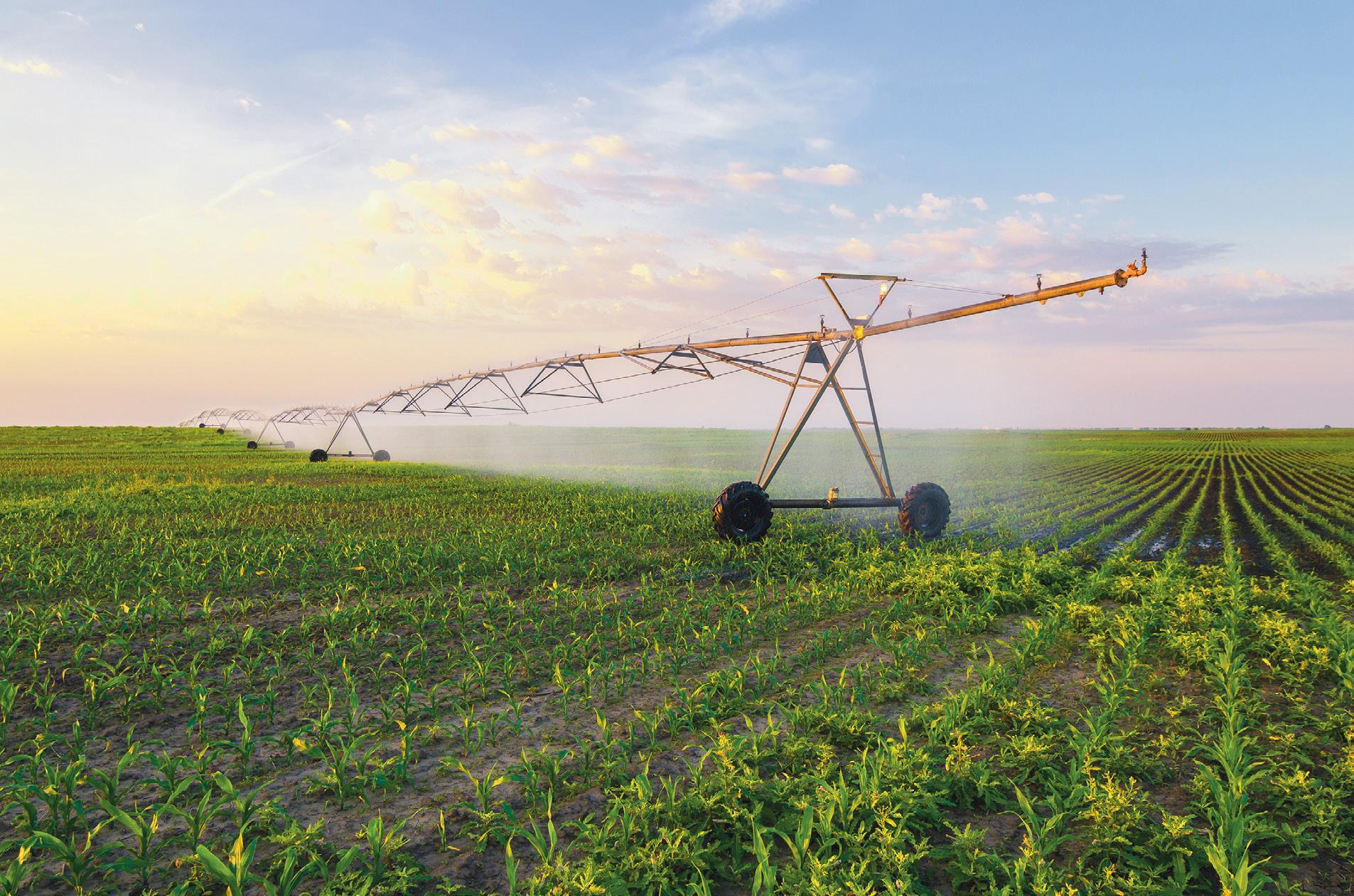










Maintaining a healthy environment by creating water-less carbon neutral mines and delivering positive biodiversity outcomes.
Building thriving communities with better health, education and levels of employment.
According to Anglo, these Global Stretch Goals are deliberately ambitious and designed to challenge it to lead and innovate. “We’re putting all our efforts into delivering them between now and 2030,” says the company.
Lest we have forgotten them, the UN’s Sustainable Development Goals (SDGs) to which Anglo’s plan is aligned, are the following: no poverty; zero hunger; good health and wellbeing; quality education; gender equality; clean water and sanitation; affordable and clean energy; decent work and economic growth; industry, innovation and infrastructure; reduced inequalities; sustainable cities and communities; responsible consumption and production; climate action; life below water; life on land; peace and justice strong institutions; and partnerships towards these goals.
In respect of the UN’s SDGs, Anglo states: “We are well positioned to play a greater role in South Africa’s achievement of the SDGs as we implement our Sustainable Mining Plan. Informed by the SDGs, our Sustainable Mining Plan sets a vision for 2030 with clear targets that will re-imagine mining to improve people’s lives. We are recognized as leaders for how the SDGs are integrated into strategy through their alignment with our SMP and how a data-led narrative is shared in accountability dialogues with stakeholders.”
Due to the mainstreaming of ESG considerations, Anglo says it has seen an increase in scrutiny from various stakeholders in how the private sector is incorporating sustainability into core business but also in how business shares that journey.
“When we began our SDG journey these considerations touched on issues of strategy, disclosure and accountability. Now we are seeing that scrutiny also ask questions of meaningfully disclosing SDG performance, supporting innovation and investing in partnerships for impact. The private sector response to the SDGs is ramping up and is set to get more attention given the role of business in addressing socio-economic fault lines opened by the COVID-19 pandemic.
“As such, the current landscape of expectations on SDG action have prompted us to expand our approach beyond simply mapping our activities to the SDGs and then sharing that in Accountability Dialogues. In 2021 we thus expanded the scope of our SDG programme to include collaborative efforts, most notably in partnership with the United Nations Country Team in support of the new UN Sustainable Development Cooperation Framework (UNSDCF) with Government,” says Anglo in a statement.

Anglo says its Sustainable Mining Plan brings into sharp focus a set of 13 SDGs that, through the implementation of the nine Stretch Goals, will ensure that Anglo American in South Africa contributes strongly to specific SDG targets between now and 2030. The Stretch Goals and the nature of the interventions within each are then in turn directly related to 33 of the 169 SDG Targets.
“Our footprint is spread across 17 of the SDGs and as is typical with the SDG mapping of large businesses, our spend and activities link strongly to a small set of SDGs that in turn have knock on effects in relation to other interconnected SDGs. In 2020, the mapping identified R86.4 billion being directed towards SDG-linked activities.
“As can be expected of a large corporate entity, we make the largest contributions to decent work and economic growth, while also responding to the socio-economic development needs of
our host communities and regional contexts – including our activities in the context of mine community development,” says Anglo.
Furthermore, what Anglo calls the 5Ps – people, prosperity, planet, peace, partnerships – demonstrate that the SDGs cannot be approached in silos, but as an intertwined framework – with progress on one balancing and supporting another.
Anglo’s Trusted Corporate Leader pillar sets a stretch goal of increasing national and local accountability, whereby stakeholder accountability forums needed to be established by 2020. In fulfilment of this, Anglo American in South Africa launched the SDG Accountability Dialogue Series in November 2018 as an accountability-based conversation with key stakeholders around how we measure our footprint against the SDGs through the implementation of our Sustainable Mining Plan.
In July 2019, South Africa presented a Voluntary National Review (VNR) to the UN’s High Level Political Forum in New York. In conjunction with the Global Compact Network SA, Anglo American submitted a case study on how it was aligning to the SDGs through the implementation of the Sustainable Mining Plan in South Africa
Aware of the special meaning transformation has in South Africa, meaning changing who we are at the most elemental level and thinking about and doing our work in entirely new ways, Anglo America says for it transformation is a way of building a more just and equitable South Africa, taking into account South Africa’s difficult history of inequality and exclusion.
It says the 2020 South Africa Transformation Performance report provided an overview of the company’s transformation progress and included its performance against the Broad-Based Black Socio-Economic empowerment. Anglo American in South Africa’s case study was profiled first in the report amongst other high-profile organisations who are also leading the way in terms of SDG alignment, highlighting the leadership position we hold in how private sector players are responding to the SDGs.
In a recent update regarding its sustainability initiatives, the company said it was working on a number of key initiatives that show its FutureSmart MiningTM approach in action. These range from:
• Envusa Energy – Anglo’s regional renewable energy ecosystem in South Africa.
• Zero Emissions Haulage System - following over 1200 hours in the NuGenTM fleet at Mogalakwena, further development
and commercialisation are now being accelerated through First Mode.
• Coarse Particle Recovery (CPR) - the innovative flotation process, which permits material to be ground to a larger particle size, allowing the early rejection of coarse waste and greater water recovery, has enabled 16% increase in copper production without the need for additional energy at El Soldado.
• Hydraulic Dewatered Stacking (HDS) – Anglo has successfully demonstrated Hydraulic Dewatered Stacking at the El Soldado mine. Its engineers hypothesized that fines free sand available from CPR (and readily available from many tailings) could be used to build a three dimensional drainage system to rapidly desaturated hydraulically placed tailings.
• SandLixTM - considers three elements: particle size, temperature and chemistry. Initial results on primary copper ores have shown recoveries of over 70% in half the time of traditional leaching methods. This technology could potentially replace conventional concentrator circuits and deliver metal more responsibly – at roughly half the embodied water and energy intensity.
Whilst projects like HDS and SandLixTM continue to mature and hopefully deliver value faster, Anglo also continues to develop new concepts:
Microwave - preconditioning ores with microwaves weakens them for both rock cutting and downstream comminution processes, enabling the possibility of accelerated mining and development rates, allowing for access to ore bodies quicker and to mine them faster.
• Haulage re-defined - in an attempt to address the shortcoming of mining trucks, namely cost, speed and energy consumption, Anglo has created a unique alternative value proposition, using the vehicle as a sensor, almost halving the energy used, increasing speed and effectiveness, all at a reduced cost.
• Intelligent logistics - seeks to redefine materials movement, efficiency and scalability with the result driving new thinking for both underground and surface mine designs.
- Staff Writer with information supplied by Anglo American.

Digital transformation is an imperative for mining, even a non-negotiable, as it serves as the seamless thread through all of the mining value chain processes, and enhances safety and health, security, production, and workforce and leadership capability. So says the Minerals Council South Africa. The implementation of these processes needs to be executed with care and responsibility, it says.
This view, says the Council, formed the basis for two key studies on the state of digitalisation and 4IR preparedness in the South African mining industry, which the Minerals Council conducted in collaboration with PwC and the Mandela Mining Precinct. The findings in each study were collected into ten key insights. We take a closer look at these insights contained in PwC’s report.
Since 2021, mining CEOs have focused on innovation rather than top-down initiative-based approaches to digital transformation. We are now seeing digital and 4IR as de facto parts of mining, instead of having to prove its value through top-down initiatives. According to this survey, 100% of respondents are on the digital journey –including leveraging technology for ESG programmes. CEOs own the strategic perspective, seeing digital and 4IR as enablers of achieving strategic and digital ambitions, and setting the pace, direction, and expectations around digital initiatives.
The CEO is the strategic steward – delivering on commitments made to shareholders and communities. They are seeking to define work in the new digital world across the mining value chain –finding, mining, treating, and trading. Carbon neutrality, renewable mines, improved resource use, and data-driven business strategies all involve digital elements. A persistent focus on measurable value creation has been seen – mining is after all about tracking the benefits on the bottom line.
Equal participation in the digital transformation journey for all in operations came up as a strong leadership theme. This is key to getting buy-in across the enterprise. Trust in the leadership team is essential to the success and adoption of these tools. In 2023 the entire management team is involved in the digital programme. Using a 4IR lens, the executive and senior management teams focus on reducing and preventing duplication, expanding and achieving the roadmap, and embedding an environment for prediction and analysis and real time insights.
The key here is the roadmap, and realising you are on a journey. Digitalisation and 4IR are not isolated activities. The respondents
identified the roadmap as critical – you must have a vision and a plan for how to get there.
Miners have significantly shifted the goalposts for their digital programmes since 2021. Where 13% of miners in 2020/1 had no digital programme to speak of, today 100% of the miners surveyed focus on digital and see it as a critical tool for business sustainability. We are seeing a change from ‘digital only’ projects to ‘every project embeds digital’ – in other words it’s now embedded as one of the tools we use to demonstrate the value of projects. None of the miners surveyed classified themselves as new entrants to the world of digital.
Older South African mines struggle with digital transformation due to technical and digital transformation technology debt (legacy systems). Retrofitting where it was not designed for purpose is costly. Several CEOs made the point that their newer (typically overseas) mines were designed with digital in mind, upfront, and are 75% along the roadmap after just a few years.
When asked why we could not replicate this in South Africa they said that the key drivers – aside from the age and retrofitting requirement – is firstly the lack of qualified resources, and secondly the resistance to change from a lowskilled low educated workforce. There is also some confusion and uncertainty as to how the new technologies will function and scepticism regarding ROI.
This is not to say we do not have cutting-edge digital transformation technology in use – it is applied in specific areas of the value chain. A concentration of technology initiatives can be seen within the processing areas of the business which are on average 20% closer to the transformed vision at 50% (with one at 80%). Open pit operations are typically also connected and initiatives in that area are about 40% complete, according to the executives. South Africa’s underground mining lags at best at 30%. This plant and processing focus makes a lot of sense when you consider the implications of even a 1% improvement in processing that will largely fall to the bottom line.
The key digital transformation technology initiatives found, included miners looking to integrated reporting, integrated mine planning, logistics automation, digitally optimised supply chains, integrated source-to-pay and finance functions,
supported by HR standardisation, digital training and skills development, as well as platforms within the businesses that are used to promote and share innovations.
Architecture featured more strongly as miners determine which solutions are allowable in the landscape, what key activities must be supported and identify functions where no changes should be permitted. Looking for economies of scale in software and solutions is important to counter the inflationary pressures in the external environment and is being undertaken by a third of respondents.
When CEOs and their executive teams were asked about how they define value from their investments in digital, qualitative responses were received including ‘proper integration – driving for value’, and ‘return in value either through cost saving or increasing returns - not only short-term returns.’ Many local mining houses have not yet fully quantified non-financial value from the perspective of stakeholders, employees, and community members.
One CEO – of one of the biggest investors in digital 4IR transformation in South Africa – related that the financial value of digital transformation has not been quantified and identified as yet (speaking to the data-led decision models expected to mature from 2025-2027 with these answers).
When asked where it leaves us in respect of the value of digital transformation, the unequivocal response was visibility and transparency – allowing stakeholders to know what’s going on and be able to connect the dots in real-time. Reduction of bureaucracy was identified as a clear value and of course, the ability to make better decisions as well.
The survey also asked what value is there for labour? One of
the most powerful transformation stories came from a union –where they discussed a 15-year digital transformation that had no retrenchments or importation of new skills – yet achieved major benefits.
The survey found that cost containment is still king, closely followed by survival.
Looking at the themes above, respondents were asked what was the most important of these themes in 2020 versus today. For reference, the most dominant themes in the prior study were cost leadership, efficiency and profitability.
In the recent 2022 interviews, the situation became more complex – but with mining as a price taker, it follows that 38% of respondents put cost leadership, efficiency, and profitability as their number one concern, with another 11% stating it was their second highest concern.
The biggest change is that overall business sustainability and longevity is the second highest result with 22% selecting it as their pre-eminent concern. Sustainability leadership was selected as dominant by only 5%, but 17% of the respondents noted it as their second highest priority. Some specifically chose sustainability leadership over ESG assurance mechanisms because their ESG assurance program is combined with or led by sustainability leadership.
The biggest surprise was ESG – or the lack of it. Only two companies selected ESG, and neither was selected as first priority. For one it was their second priority (after sustainability

leadership), but they noted that ESG is a big factor for them and is applied in every investment decision.
The latest survey found that digital certainly provides measurable value – that is very clear from the effort put into new mines. It is more of a challenge to retrofit technology to our old mines, but that is not stopping miners from using technology to maintain their competitiveness.
Insight 4: Digital tools don’t just measure, they contribute
Labour unions are key stakeholders in the mining industry and have a unique perspective on the value of digital and 4IR. The two unions interviewed have indicated that digital transformation technology is essential in enhancing their health and safety, and it performs a vital role in communications.
This aligns with the CEOs insights that emphasised safety and communications as an essential value of digital transformation and 4IR tools. The unions stated that there must be a balance between productivity and health and safety. In their minds, there is a strong link between digital transformation and safety – with real-time or near real-time communications, sensors, automated machine stoppages and safe zone monitoring with instant reactions in the case of an incident.
They emphasised that data can be used to improve the health and safety of the miners. They further contended that labour has a significant role to play in the implementation of the new technologies – ensuring that where the rubber meets the road there is practical benefit for all parties.
One union emphasised the need for access to the real-time data to improve their productivity, health, and safety. Mining houses can use real-time data and analytics to improve end-toend value chain systems by improving the performance of their workers while monitoring their safety and health. However, it is not all about productivity and cost savings. Perhaps the most important aspect was enablement – two of the three unions felt that digital had another, greater purpose – and that is to educate and to enable.
Digital transformation can help mine workers and their bosses to align and work towards the same goals, the unions said. Here, the unions stipulated that mines could enhance collaboration and communication by promoting an open culture using technologies that facilitate communication and collaboration. The union members asserted that the importance of data to them is accessibility. They need the information on time – and the ability to interpret it and immediately adjust operations accordingly. However, the unions highlighted that the mining houses have not in their view done enough with digital tools except for data and communication where they saw improvements during COVID-19 pandemic.
Insight 5: The imperatives for sustainability, and the crown jewels
Data is at the centre of business success and sustainability in this new world, and data will be the most intensely managed part of the mining business over the next ten years as trustworthy information is needed in real-time. This brings with it the need for Artificial Intelligence (AI), machine learning and other big data technologies to make sense of large data sets.

Insight 6: We are up to the challenge and have the tools we need to win
South African miners have not been satisfied with the progress in digital and 4IR transformation in the past few years. Mining CEOs agree that the development, use, and understanding of technology in the mining space has been spurred on, but unanimously agree that we could have done better.
Insight 7: Mining is about people — and we need to fight globally for talent
Leadership is key; however culture can replace scarce skills. The publication looks at how mining needs to create an environment that attracts young talent in a world that also needs data scientists and digital natives.
Insight 8: ESG — critical for business survival or tick- box?
While ESG may be one of the latest buzzwords related to business and sustainability, the response to ESG drivers is not in any way new to the mining sector. However, the way in which mining companies in South Africa need to engage with these drivers is changing. This requires a fundamental rethink in terms of the risks and opportunities presented by these drivers and the underlying systemic changes they demand.
Insight 9: ESG — regulations shape ESG requirements (for better or worse)
While legislation drives the responsible business agenda for our mining industry, embedding ESG into your organisation is more
than just compliance — it is centred on the ability to create longterm value.
Without a blueprint or clear regulations, miners have chosen their own preferred path and reporting for ESG. While unions say there is less focus on social and governance issues, all parties regard ESG as a path to a sustainable mining future, with digital as the means to accomplish these goals.
Commenting on the survey report, Ian Mackay, PwC Smart Mining Senior Manager, says: “Digital transformation and ESG practices are paying off — qualitatively and quantitatively. Digital is successfully competing for capital in mining as it is providing measurable benefits and delivering real change.”
What is also encouraging from the survey is that the ownership of the digitalisation strategy is no longer a business unit — instead, we find digital embedded in every project, and a renewed focus on measurement of real-world results.
Adding to this, Chrisna Evans, PwC Mining Operation Transformation Associate Director, concludes: “There is an increase in the number of mining organisations investing in digital journeys, compared to the previous study. Based on where mining entities are on their journey, the next five years will present a potentially transformed mining sector and will eventually result in integrated digital mining operations that embrace the organisation’s value drivers and the benefits of 4IR.”
– Staff Writer
Formed in 1909, The South African Institute of Electrical Engineers sports ± 6000 engineering professionals.
Our members are involved in various engineering activities, including academic research, manufacturing, electronics, telecommunications, measurement and control, mining, and power infrastructure services. Their contributions play a significant role in enhancing the quality of life in communities and driving the
Join us for our quarterly forum meetings and be part of the conversation that addresses critical issues in South Africa. As a valued SAIEE Corporate Partner, your input and perspective will help drive meaningful solutions. Don’t miss this opportunity to collaborate and make a difference.
Corporate Partners receive:
• Access to 6000 engineering practitioners
• Rub shoulders with your industry peers
• Preferential rates on all SAIEE advertising platforms
• Access to the peer-reviewed Africa Research Journal
• Product Launch Platform
• Training Facilities
• Networking Opportunities
• Recruitment Administration
• Skills Development Courses
• Preferential CPD training course rates
• Assisted Corporate Social Responsibility
• Mentorship
• Offering SAIEE Students Workbased Integrated Learning (WIL)
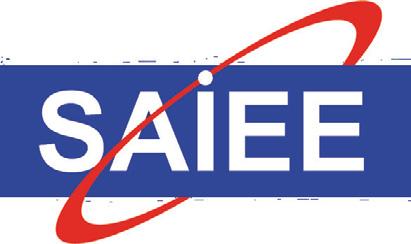


Cryptocurrency is on the move in South Africa since last year, going forward into 2024 and beyond. In fact, crypto is booming in South Africa, having overcome earlier popular scepticism among consumers.
One of those leading the charge of innovative new developments is South African crypto exchange VALR, headed by Farzam Ehsani, VALR Co-founder and CEO.
VALR recently announced what it calls a new “strategic partnership” with global card payment group Visa to expand the use of crypto payments in domestic and global markets. According to VALR it will be collaborating with Visa on payment services that will be designed to open up crypto payments and help push the adoption of digital currencies.
VALR said that it also recently obtained approval to offer crypto services in Europe and was in the process of obtaining further licenses in Dubai, Mauritius and South Africa at the time.
We’re proud to announce our partnership with Visa, the world’s largest card network, to issue Visa cards and deliver innovative digital payment solutions,” VALR said in a statement.
“This collaboration combines VALR’s crypto expertise with the deep payment capabilities of Visa, unlocking a world of possibilities in the digital payments landscape. Visa’s history of successful partnerships with global crypto asset service providers, including Coinbase, Crypto.com, and Circle, firmly establishes it as a major player in the world of digital currencies.
“Our partnership with Visa marks a new chapter in the evolution of digital payments, and we’re excited to be a part of this journey, revolutionising digital payments as we know them.”
Lineshree Moodley, General Manager of Visa South Africa, also shared her enthusiasm for the partnership, saying, “Visa is excited to work with VALR to issue Visa credentials to VALR customers. With this partnership we will work on innovative payment and card products that empower VALR customers to utilise the Visa network to make and receive payments globally. The use cases are vast and we’re looking forward to the collaboration with VALR to provide customers with a unique value proposition,” she said.
According to VALR, this collaboration represents a significant step forward for VALR, underlining its commitment to innovation and customer-centric solutions. It serves as a testament to their
journey, transforming from a South African crypto exchange into a global leader in the world of digital finance, the company says.
CEO Ehsani echoes this sentiment, adding, “Visa is a household name in payments, with vast experience and global reach. A partnership with Visa was a natural step for VALR as we bring more innovative products and services to our customer base. We are very excited to work with Visa to continue to bring the very best technology and services to our global audience.”
“The VALR-Visa partnership follows other Visa partnerships with leading global crypto asset service providers such as Coinbase, Crypto.com and Circle,” said VALR.
In September last year, VALR announced that it was introducing VALR Pay as a new crypto payment solution at Pick ‘n Pay.
“Through our partnership with CryptoConvert, users are now able to use their Bitcoin (BTC) balances on VALR to seamlessly purchase groceries and a wide range of products at Pick ‘n Pay stores nationwide, including Pick n Pay Clothing and Liquor.
Ehsani emphasised VALR’s commitment to fostering the growth of the crypto ecosystem. He explains: “When we developed VALR Pay, our vision was to first create free, fast and easy peer-topeer payments and then to facilitate payment acceptance at merchants. The acceptance of VALR Pay at over 1,500 Pick ‘n Pay stores across South Africa brings this vision to fruition. We’ve built a powerful API to enable other businesses, like CryptoConvert, to leverage our technology to create beautiful products and services with us.”

VALR currently offers services like VALR Pay – which is compatible with crypto payments at Pick ‘n Pay – blockchain staking and spot margin trading. The company says it will soon be launching a perpetual futures product. In the meantime, Visa has started a crypto consulting service and invested in crypto platforms as part of a global push for digital currency adoption. According to Visa, the partnership will allow the group to work on payment and card products that allow VALR customers to use the Visa network to make and receive payments globally.
For those unfamiliar with VALR, it is a crypto exchange based in South Africa but with global reach that lets customers trade bitcoin and a wide range of other crypto assets. The company says it has processed over $10 billion in trading volume and has raised $55 million in equity funding since its launch.
Carel van Wyk, founder of CryptoConvert, highlighted the significance of the partnership with VALR in expanding crypto payments to a broader consumer base.
“Cryptocurrency is founded on the idea of open standards and collaborative innovation. VALR’s commitment to providing useful tools and infrastructure to the industry exemplifies that, to the benefit of everyone,” said Van Wyk.
The introduction of VALR Pay as a payment method at Pick n Pay stores marks a big stride in the seamless integration of cryptocurrencies into everyday transactions. This partnership not only highlights the increasing adoption of digital assets but also signifies a step towards financial inclusivity and convenience for all South African consumers, says VALR.
“As we continue to collaborate and innovate together, the future of crypto payments in South Africa looks brighter than ever,” it says.
So, what does this mean in layman’s terms? This partnership now allows for Bitcoin payments to be made from customers’ apps at all Pick n Pay tills across South Africa in one easy step by simply scanning a QR code. It will be available at more than 1,500 Pick ‘n Pay stores countrywide, including PnP Express and Pick ‘n Pay Clothing. Shoppers will also be able to buy airtime, electricity, flight and bus tickets, and pay municipal bills with Bitcoin at the till.



VALR adds that CryptoConvert is a safe and simple crypto payment platform that focuses on direct payment solutions instead of voucher-based approaches and operates online and at till points. The company says that CryptoQR support is already available in VALR and Luno’s Android app, with iOS being rolled out soon. VALR says that iOS users can use VALR Pay at Pick ‘n Pay by downloading the CryptoQR app and setting their default wallet to VALR Pay.
In another recent groundbreaking move, VALR announced the launch of perpetual futures on VALR. In terms of this, all VALR users in qualifying jurisdictions will now have the opportunity to trade the world’s first Bitcoin and USDT perpetual futures paired against the South African Rand, alongside USDT perpetual markets.
With this service, users will be able to extend their reach with less capital, with up to 5 times leverage and their qualifying collateral used to trade any product. According to VALR they will also be able to enjoy one of the most competitive futures trading fee structures in the industry, with fees as low as -0.01%. Customers can also use their collateral from a single account to trade seamlessly across any product—futures, spot or margin.
With this development, BTC/ZAR, USDT/ZAR, and BTC/USDT perpetual futures pairs will join VALR’s Pro Trading platform, alongside several spot and spot margin trading pairs, which have seen a cumulative trading volume of over R230bn ($12.1bn) to date.
Perpetual futures have become the most traded crypto-related instrument, accounting for over 75% of global crypto trading volumes. This is why VALR has built a secure perpetual futures trading platform to grant VALR users access to the crypto derivatives markets, further solidifying its commitment to meeting the evolving needs of advanced traders globally, said the company.
But, says VALR, there are a few key points to keep in mind. Futures trading can only be enabled on subaccounts. There is no restriction on the number of subaccounts that can be enabled for futures trade. And, in order to enable futures trading on VALR, customers will first need to submit their proof of address, such as a bank statement, tax certificate, or utility bill (not older than 3 months). Their support team can help with this. Futures trading also carries inherent risks, this is why VALR encourages customers to review VALR’s Future Trading Terms and Risk Disclosures before enabling futures.
But its not only VALR that are going places with cryptocurrency services in South Africa. According to Daily Investor over 90 financial services providers have applied for licences with the Financial Sector Conduct Authority (FSCA) to offer cryptorelated services.
In October 2022, the FSCA declared cryptocurrencies a financial product, allowing crypto trading platforms to become licenced and placing them under its regulatory purview. This also led to the FSCA conducting an in-depth study of the crypto industry and its potential risks to South Africa’s economy and financial sector.
According to Daily Investor, Awelani Rahulani, head of the regulator’s fintech division said the study was conducted to help the FSCA understand the risks of the widespread adoption of crypto assets on the traditional financial system and the economy. The study also showed that unbacked crypto assets, such as Bitcoin, are the most popular type in South Africa, mimicking global trends.
– Staff Writer







































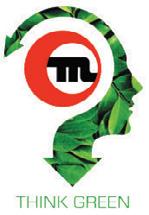













Of course, estate agents will always tell you what a wonderful, safe and growth-linked investment property is, and then come up with the “perfect” property for you before convincing you to make the biggest financial splurge most people will make in their lifetimes, while the agents will pocket a hefty chunk of it as commission. But is property always such a good investment?
Many homeowners would have disagreed strongly that it’s a good investment when interest rates climbed through the roof last year, causing them all kinds of financial stress. This year, however, expectations on the interest rate front are somewhat better, but not everyone shares a more positive view.
Buying property is a bit like buying a painting – are you buying it for your own pleasure or use, or purely as an investment? Very few paintings apart from those of the known masters like Picasso or Van Gogh ever make for good investments, and most of us can only dream of affording those. Property is in a similar league. But if you buy for yourself, the emphasis is much less on ‘investment’.
Nonetheless, well-known economist Dawie Roodt says generally he is no great fan of property as an investment and that acquiring property in South Africa is not a particularly good investment. Recently interviewed on Salaamedia, Roodt said buying property in South Africa had many pros and cons but that there could be some benefits which make buying a house attractive.
Many economists will tell you that property, as a hedge against inflation, could be a good idea as typically the value of property increases at the inflation rate. Another benefit is “gearing”, which means you can borrow money against your property. You can use the bank’s money to buy property, maintain its value against inflation, and then borrow against it. That’s all on the positive growth-real-estate-price-market

side. And, of course, you can live in your property or let it to tenants. But letting comes with its own challenges as tenants can damage your property, fall behind on rent, or even tie you up in costly legal battles.
Buying a holiday home also has pros and cons. It is not working for you if it stands empty most of the time and you only use it three or four weeks a year, unless you are very wealthy and it won’t matter to you or your bank balance. Longdistance maintenance can also be a pain and expensive.

On the negative side the transactional costs involved with buying a property are very high and generally more expensive than the costs associated with any other investment asset class. There are high ongoing expenses too, such as levies, insurance, maintenance and rates and taxes.
All of this adds up to making property as an investment not all that attractive. One could perhaps rather put money into a listed property stock or unit trusts, while research has shown that investing in gold, for instance, has consistently over a period of time produced much higher returns than investing in property.
Investec Chief Economist Annabel Bishop says South Africa’s economic growth outlook for 2024, at 1.0% y/y, is stronger than 2023’s likely 0.5% y/y outcome, with 2024 expected to see the start of an interest rate cutting cycle, as well as lower inflation on average, and improvements to infrastructure.
The housing market was under pressure most of last year due to the rapid interest rate rise and increasing cost of living. If expectations of interest rates starting a downward cycle this year prove correct, the market should start showing recovery, although prospective buyers will still be very cost conscious.
But a word of caution, as not everyone is optimistic that 2024 will bring improvements. The latest Bank of America Fund Manager Survey, looking at South Africa’s prospects going into 2024, found that investors are optimistic of strong performances in the banking, software and industrial sectors in 2024, but they anticipate a flat outlook around real estate, among others.
Fund managers surveyed largely agreed that interest rates in South Africa will start moving down. However, they also warn that the full impact of the current high rates has not yet been felt. What this means is that consumer spending will most likely remain under strain during the first half of 2024, with retailers and other economic sectors likely to feel the squeeze.

Be that as it may, if you are going to set your fears aside and be the brave one who is going to put money into property this year, here are some property market trends we have identified, that may be of interest to you.
First, interest rates again. Apart from all that was said above and despite rising inflation, PwC and Nedbank are just two entities that are predicting rate cuts this year as the South African Reserve Bank looks to stimulate the market. Professionals in the real estate business anticipate that this will bring about an increase in home loan applications this year.
Another anticipated trend is a further surge in the buy-to-let market which reached a peak in June 2023. This surge in the buy-to-let market was especially visible in the Western Cape, with luxury properties being bought and let to tourists.
A third trend to take note of, is co-buying. This takes place when two or more people purchase a property together, dividing the home loan repayments and management costs between themselves. This is an option that is often attractive to couples, business partners, families, or friends. It also provides
a cheaper way for young or first-time buyers to gain a foothold in the market.
Real estate specialists are also pushing properties with a view to semigration driven by the work-from-home trend that has been on the rise since the advent of Covid-19. This has led to higher demand for larger houses in scenic areas, with the Western Cape once more a much-favoured target.
In fact, this trend has strongly manifested itself in coastal towns of the Western Cape where, in some areas prices have seen double-digit growth despite the recent interestrate driven downturn in the market. For instance, Lew Geffen Sotheby’s International Realty in Plettenberg Bay has noted that the average house price there increased by 31% in 2021 from R2.48 million to R3.92 million, then only increased 9% to R3.92 million in 2022, before increasing again last year by 26% to R4.84 million.
Both Hermanus and Knysna also experienced significant price increases over this period, in some instances by as much as 47%, while prices have held firm or gone up in towns like Mossel Bay and Still Bay.
Lenders and estate agents also point out that the rising inflation of 2023 did not make banks less willing to approve
topics this year include:
Resources 4 Africa is pleased to announce the 10th edition of its annual Junior Indaba, a popular meeting place for junior miners which is enjoyed by all for its incisive, informative and frank discussions tackling the challenges and opportunities for exploration and junior mining companies in South Africa and elsewhere in Africa. Discussion topics this year include:
•
can be done to drive exploration in South Africa?
• What can be done to drive exploration in South Africa?
• What can be done to drive exploration in South Africa?
• What can be done to drive exploration in South Africa?
• What is the latest update on the South African cadastral system?
• What is the latest update on the South African cadastral system?
• What is the latest update on the South African cadastral system?
• What is the latest update on the South African cadastral system?
• What is the role of junior miners in meeting the demand for critical minerals and metals?
• What is the role of junior miners in meeting the demand for critical minerals and metals?
• What is the role of junior miners in meeting the demand for critical minerals and metals?
• What is the role of junior miners in meeting the demand for critical minerals and metals?
• How are commodity prices faring in 2024 and what will this mean for juniors?
• How are commodity prices faring in 2024 and what will this mean for juniors?
• How are commodity prices faring in 2024 and what will this mean for juniors?
• How are commodity prices faring in 2024 and what will this mean for juniors?
• What are the challenges and opportunities for junior miners and explorers in the rest of Africa?
• What are the challenges and opportunities for junior miners and explorers in the rest of Africa?
• What are the challenges and opportunities for junior miners and explorers in the rest of Africa?
• What are the challenges and opportunities for junior miners and explorers in the rest of Africa?
• What lessons can be learned from successful junior miners who are already operating in SA and beyond?
• What lessons can be learned from successful junior miners who are already operating in SA and beyond?
• What lessons can be learned from successful junior miners who are already operating in SA and beyond?
• What lessons can be learned from successful junior miners who are already operating in SA and beyond?
• What are investors looking for when considering African junior mining projects?
• What are investors looking for when considering African junior mining projects?
• What are investors looking for when considering African junior mining projects?
• What are investors looking for when considering African junior mining projects?
• And much more…
• And much more…
• And much more…
• And much more…
We will feature a number of junior mining success stories, as well as our regular features –Myth Busters and a showcase of presentations from junior miners across the continent.
We will feature a number of junior mining success stories, as well as our regular features –Myth Busters and a showcase of presentations from junior miners across the continent.
We will feature a number of junior mining success stories, as well as our regular features –Myth Busters and a showcase of presentations from junior miners across the continent.
We will feature a number of junior mining success stories, as well as our regular features –Myth Busters and a showcase of presentations from junior miners across
Lead Sponsor:
Premium Sponsors:
Networking Sponsors:




























home loan applications. In fact, they say, increasing competition between banks often led to better deals with lower interest rates. High loan approval rates were noted in 2023 and are expected to continue.
Deposits, usually the biggest challenge for first-time buyers, have actually come down, with the average deposit now standing at 10.9% as a percentage of the purchase price, according to Ooba Home Loans. However, this could be the result of a decrease in the average purchase price from R1.47 million in March 2023 to R1.43 million in August 2023. Whatever the reason, lower deposit requirements will make buying much easier.
Finally, high pre-approval rates are expected in 2024. Preapproval provides homebuyers with a good idea of what they can afford and an analysis of their credit record. In turn this will make banks more likely to approve the actual loan.
But not everyone is overly optimistic about the property market in 2024. For instance, Adrian Goslett, Regional Director and CEO of RE/MAX Southern Africa believes 2024 will be another challenging year for the property market. Real estate agents, he says, will have to continue to work hard to close a successful sale.
He is hopeful, however, that there won’t be any further hikes but says interest rates are likely to remain high over the course of the year. He says many economists predict that interest rates will hold steady for the first half of 2024 and that they only expect to see a few interest rate cuts from the second half of 2024.
Goslett predicts that affordability will continue to be a major issue in the year ahead, which means that the buyer pool will most likely remain smaller than usual. But, like other real estate professionals and economists, he also points out that trends and conditions will differ from place to place or among regions, and some will be in more demand than others.
A final sobering word or two from FNB’s property strategist John Loos. He noted in FNB’s 2024 property insights analysis that property investment may improve due to various economic reasons (interest rate cuts, lower inflation, etc), and investors may “in some ways” have a better year in 2024 than they have been experiencing. But, he says, improvement may only reflect in 2025 numbers, with various economyproperty market ‘leads and lags,’ and risks remaining abundant.
On a more positive note – depending on how you look at it – one of the key trends identified by Loos was that while municipal rates and electricity tariffs rise and service delivery drops, homeowners are looking to migrate to areas or regions where things aren’t falling apart, and they actually work – and the Western Cape stands out as the province most likely to benefit.
The FNB insights report shows some optimism amongst experts for a “mildly improved” economic environment in 2024, which means that the year could yield better results for the commercial property market. But, says Loos, this is only likely to play out in 2025.
– Staff Writer







Over the last few decades banking has undergone radical changes – from clients mostly conducting business over a counter with a human teller to the point where business is mostly conducted on a smartphone or laptop. And yet the revolution is far from over as banking continues to reinvent itself.
As we find ourselves in the 4th Industrial Revolution and already moving steadily into the fifth, more exciting changes are taking place in banking and other financial services. For one, following international trends, South Africa has by now actively embraced the open banking revolution that will empower consumers by giving them greater control over their financial data and access to a wider range of financial services.
In fact, ‘open banking’ has become something of a buzz phrase in global financial circles. In South Africa, banks, businesses and consumers have fast come on board recognising the potential power of open banking to give consumers more control, offer more services, streamline transactions, and maximise efficiency. As artificial intelligence (AI) takes the world by storm, its power will certainly further add to this exciting development in months and years to come.
Greatly facilitating this revolution in South Africa, is the country’s excellent financial services sector and systems, governing laws and regulations of the highest global standards, and the very stringent compliance requirements of our financial institutions and regulators.
With these factors firmly in place, risk is minimised, and consumers know that what they are being offered will be beneficial and safe. Which is why South Africa is so ready and receptive for open banking. The concept was first introduced in the United Kingdom in 2018 and has since been implemented in various countries around the world, inspiring South Africa
 Image by AlexLMX, iStock
Image by AlexLMX, iStock

to explore its own implementation possibilities.
So, for those who don’t know, exactly what is open banking?
According to Investopedia, open banking, also known as “open bank data”, is a banking practice that provides third-party financial service providers open access to consumer banking, transaction, and other financial data from banks and non-bank financial institutions through the use of application programming interfaces (APIs). Open banking will allow the networking of accounts and data across institutions for use by consumers, financial institutions, and third-party service providers. Open banking is becoming a major source of innovation that is poised to reshape the banking industry.
Under open banking, banks allow access and control of customers personal and financial data to third-party service providers, which are typically tech startups and online financial service vendors.
Customers are normally required to grant some kind of consent to let the bank allow such access, such as checking a box on a terms-of-service screen in an online app. Third-party providers APIs can then use the customer’s shared data (and data about the customer’s financial counterparties). Uses might include comparing the customer’s accounts and transaction history to a range of financial service options, aggregating data across participating financial institutions and customers to create marketing profiles or making new transactions and account changes on the customer’s behalf.
Furthermore, Investopedia says open banking is a driving force of innovation in the banking industry. By relying on networks instead of centralization, open banking can help financial services customers to securely share their financial data with other financial institutions. For example, open banking APIs can facilitate the sometimes onerous process of switching from using one bank’s checking account service to that another of another bank. The API can also look at consumers’ transaction data to identify the best financial products and services for them, such as a new savings account that would earn a higher interest rate than the current savings account or a different credit card with a lower interest rate.
Through the use of networked accounts, open banking could help lenders get a more accurate picture of a consumer’s financial situation and risk level in order to offer more profitable loan terms. It could also help consumers get a more accurate picture of their own finances before taking on debt.
An open banking app for customers who want to buy a home could automatically calculate what customers can afford based on all the information in their accounts, perhaps providing a more reliable picture than mortgage lending guidelines currently provide. Another app might help visually impaired customers better understand their finances through voice commands. Open banking can also help small businesses save time through online accounting and help fraud detection companies better monitor customer accounts and identify problems sooner, says Investopedia.
It’s no wonder then that open banking has emerged as a global financial revolution, and that South Africa is now poised to adopt this revolutionary and transformative concept as local

businesses and consumers recognise its potential.
As Shanaaz Trethewey, chief operating officer for Comcorp South Africa told Ventureburn, a platform for digital news in the emerging markets sphere: “We are seeing more businesses, outside of the financial sector, maturing their digital channels to achieve digital verification by receiving supporting documents direct from the source.”
Experts explain that we are already using some of the principles that apply to open banking, for instance in the form of permission we as consumers provide for credit checks or to payment platforms while shopping online. With open banking we will extend this more broadly to enable third parties to receive permissions and/or authentic supporting documents with such permission-based sharing models. The need for manually presenting documents will be something of the past.
Trethewey further explains on Ventureburn that open banking has the potential to transform how individuals manage their finances on a personal level, as it enables customised products tailored to their specific needs and preferences, while facilitating seamless everyday transactions.
As interest rates rise and inflation grows, both consumers and lenders find themselves navigating a strained economy. To navigate the demand for credit, lenders are compelled to exercise greater vigilance in their risk assessments. Understanding spending habits, obligatory expenditures, and confirming income become critical aspects. The scope of a consumer’s risk assessment is continuously expanding, leading businesses to add additional compliance layers and consumers to question the need for repetitive document production, says Trethewey.
Since Trethewey shared her thoughts on Ventureburn, things have been moving fast… not only in South Africa, but across the continent. African countries are rapidly embracing open banking, from Nigeria to Kenya to South Africa.
In Kenya open banking is also revolutionising the way banks and their clients do business. By taking advantage of technology like API’s (application programming interface) banks here can now offer users an easy way to access all of their financial information. Open banking and open finance have the potential to revolutionise how people in Kenya interact with banks and other financial services providers. It also allows new entrants into the market, opening up new opportunities for startups, Image by PeopleImages
fintech, and tech companies in Kenya that are looking for ways in which they can disrupt traditional finance models. In some markets, we see the first effects of open finance on financial inclusivity.
In December 2020, the Central Bank of Kenya released a draft five-year digitalisation plan to overhaul the country’s payment industry. The plan strongly supported open banking and stressed the importance of regulation, stating that the central bank would work to define standards for API development, including riskmanagement frameworks.
Meanwhile, the Kenyan National Treasury and Planning Department was drafting a policy for digital finance that would address four strategic objectives, namely developing open banking infrastructure; ensuring consumer protection; creating financial system regulation; and nurturing the development of the sector.
Already in February 2021, the Central Bank of Nigeria (CBN) issued its first set of guidelines for open banking in the country. In March last year it again issued a set of guidelines. The bank said it did so in order to enhance competition and innovation in the banking system. The Bank said it recognised the existence of an ecosystem for Application Programming Interface (API) in the financial and payments system and was aware of various efforts in the industry to develop acceptable standards among stakeholders.
The Bank said it, in collaboration with industry stakeholders, had developed Operational Guidelines
for Open Banking in line with the provisions of the Regulatory Framework. But open banking has been in Nigeria much longer than this. Already in 2017, the Open Technology Foundation (OTF), a not-for-profit organization, established the Open Banking Nigeria initiative. Its aim was to promote the adoption of common API standards in the country. This led to the CBN issuing the Regulatory
Framework for Open Banking in Nigeria in 2021.
This provided a framework of guidelines for data sharing and accessing data and APIs within open banking. With the release of these regulations, Nigeria entered a new phase of open banking development. As a result, these comprehensive new rules introduced more activity, energy and competition into the sector which is now thriving in the country.
Ghana is another African country where open banking is changing the way people and businesses do banking transactions. Here too, in March 2021, the central bank, the Bank of Ghana, launched pilot regulations to help promote the development of the fintech sector, including open banking. Since then, open banking has grown in popularity here and has proven to be an excellent tool for greater integration into the global economy, with seamless transactions without borders.
In South Africa Nedbank and Investec led the way when bank in 2019 they embraced open banking, paving the way for other banks to follow. In 2020, the South Africa Reserve Bank (SARB) subsequently collaborated with several government agencies and the Intergovernmental Fintech Working Group (IFWG) to establish what is known as The Innovation Hub. This entity aims to advance experimentation and innovation in fintech in the country.
Clearly, open banking is a revolutionary development that is taking banking into the future. But with AI and the 5th Industrial Revolution making their presence ever more known and felt, who knows what amazing next innovative developments will continue to change the ways banking business is conducted.
– Staff Writer

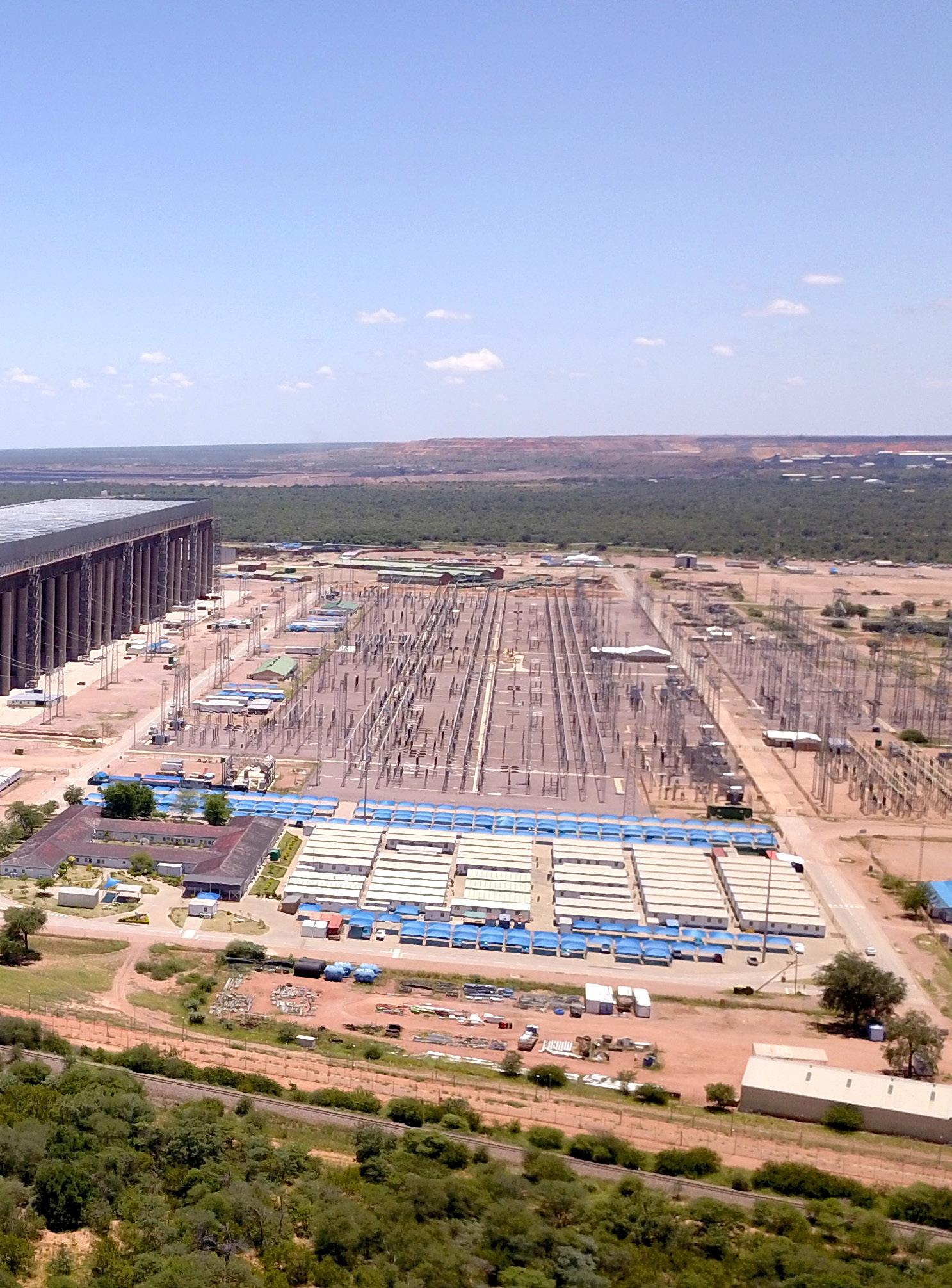
When William Shakespeare coined the phrase “to be or not to be, that is the question”, he unwittingly summed up the essence of the entire gamut of future for-and-against debates around every imaginable topic in centuries to come. In South Africa that debate is now raging around whether the struggling state power utility Eskom should be unbundled or not, or as some see it, privatised or not.
Which proposed remedy, people are asking, should be at the forefront of leading South Africa back to energy security? Opinions on that are many and varied. But in essence the debate can be narrowed down to arguments for and against unbundling and privatisation.
South Africa has already come some way in privatising part of its energy industry, a move by government born out of desperation and not conviction as Eskom continued to literally plunge the country into powerless darkness, some would argue.
Nonetheless, according to an Operation Vulindlela presentation released late last year, the South African government anticipates that private companies will add more than 4 gigawatts of electricity generation capacity to the grid by the end of this year as the government accelerates its efforts to increase private sector participation in its power sector. Operation Vulindlela is a unit run by the Presidency and the National Treasury that aims to promote investment and remove blockages.
Already in 2021, the government raised the generation licence threshold for private companies from 1 MW to 100 MW, and later also waved the need for such private generating companies to obtain licenses subject to certain conditions. And the share of Independent Power Producers (IPPs) in the renewable energy sector is growing by the day.
South Africa’s ongoing struggle with power cuts known as loadshedding has led to accelerated urgency in reforming Eskom and transitioning to renewable energy sources, opening the door to greater private sector involvement and attractive prospects for infrastructure investments. Accordingly, already private sector involvement in renewable energy projects has surged, while plans to expand and improve the transmission grid are underway. That is not to say that there are no remaining challenges. But that’s only one part of the picture; the other part concerns government’s plans and efforts to unbundle Eskom into three units in an attempt to improve performance and address Eskom’s dire debt situation, among other things.
Progress has been made, and just recently Public Enterprises Minister Pravin Gordhan announced that the board of directors of the National Transmission Company of South Africa (NTCSA), one of the three new unbundled units, has been appointed. This represents a key milestone in Eskom’s legal separation into three entities.
Not so fast, however, protests Truth and Energy civil nuclear engineer Hugo Kruger. He told Newzroom Afrika that Eskom’s unbundling is reckless and accuses government of lying when it says unbundling is not going to lead to privatisation. While Kruger has always been opposed to the unbundling of Eskom, he is not opposed to privatisation per se.
According to Kruger unbundling means Eskom will accept private-sector participation in the country’s energy sector which opens it up to competition for transmission, generation and distribution – and Eskom simply would not be able to compete, he says. According to Kruger there are many examples from around the world where unbundling failed, and countries had to “rebundle” their state power companies.

“I have not seen anyone from the government – not from Pravin Gordhan, or from Minister Mantashe, or from the Minister of Electricity’s office – citing how they are going to create guardrails against what failed in other countries,” he told Newzroom Afrika. “I regard this as a highly reckless move. Zimbabwe unbundled once, they had to rebundle after it was run into the ground. Lebanon did the same thing, and Russia in the 1990s – there are so many failed examples of unbundling.”
Kruger further cites a World Bank report which, according to him, found that no country has successfully unbundled its stateowned power utility while struggling with energy security, which is currently the case in South Africa. He says this shows that countries that unbundled during loadshedding caused chaos in their energy sectors.
The bottom line, according to Kruger, is that introducing competition while nearly a third of Eskom’s fleet is broken down will lead to the utility’s bankruptcy and a fully privatised energy sector. But, he says, privatising the sector is not necessarily better as a World Bank study comparing private and public utilities has shown, in which it was found that under the right conditions public utilities have lower tariffs to end-users than the private sector. Complete privatisation, in his view, could therefore not only lead to higher tariffs but also major job losses across the country.
It’s a view shared by many trade unions including the Congress
of SA Trade Unions (COSATU), and also by the radical left-wing opposition party, the Economic Freedom Fighters (EFF), which has condemned what it terms the continued privatisation and plundering of Eskom assets disguised as “unbundling” by Public Enterprises Minister Pravin Gordhan. Gordhan is the minister who signed off on selling Eskom’s distribution assets to a new state-owned company – note, not to a private company. Gordhan has long been a target of the EFF in its vociferous anti-ANC government vitriol.
The new distribution entity will be a fully owned subsidiary of the new Eskom holding company. But the EFF sees it differently and says this move is intended to separate assets from the debt acquired by Eskom, while building the very same assets. According to the EFF this will allow for “industrial-scale looting to continue, while the public is left to settle the debt for assets that will be privatised”. The party believes in such a scenario electricity will continue to be unaffordable for most and loadshedding will continue as before.
“Privatising energy policy and electricity generation will not only compromise South Africa’s sovereignty, but will also subject future economic policies to the whims of the private sector, atop an already compromised National Treasury that has long been destroying state capacity to promote Neo-liberal economic policies,” says the EFF.
Other critics of unbundling also argue that it is nothing but privatisation and that it often leads to adverse social and ecological outcomes. It has also been attributed to being something “straight
out of the privatisation manuals of the World Bank and the International Monetary Fund (IMF)”. Such critics argue that there has not yet been an unbundling process that did not lead to incursions by the private sector into publicly provided electricity. Unbundling, in their view, thus serves a privatisation agenda by making electricity a commodity instead of a service, with resultant higher tariffs and job losses.
The other side of the unbundling coin is represented by the likes of former Eskom CEO Andre de Ruyter. During his stint at Eskom De Ruyter led the unbundling drive as being key to improving the energy outlook in South Africa. It was he who registered the new distribution company in August 2022, of which he apparently remains a director.
Reacting to the news late last year that Minister Gordhan had instructed Eskom board chairperson Mpho Makwana to expedite the sale of assets of the Eskom distribution unit to the new separate state-owned entity, well-known energy expert Chris Yelland said in a radio interview that South Africa’s energy distribution component was in complete shambles and that more needed to be done to turn this around. According to him Eskom distributes electricity in some parts of the country while some 150 municipalities distribute it in their areas but with many failing to do effectively. So, it would seem that a dedicated distribution company could be the answer, one might say.
Gordhan also issued a statement at the time giving assurances that government had no plan to privatise any of the three Eskom entities of generation, distribution and transmission, as had been reported in the media. In his view, reforming Eskom and electricity generation and supply required the establishment of three separate companies housing generation, transmission and distribution businesses — 100%-owned by the state. “In order to implement the above, corresponding assets need to be transferred from Eskom Holdings to each of the new companies,” Gordhan said in the statement.
This is the position also advanced by De Ruyter, both now and previously as Eskom CEO. De Ruyter has on occasion urged South Africans to “let go” of their nostalgia for “the Eskom of old” as, in his view, the utility would continue to shrink and transform into a transmission business. According to him the only logical outcome of Eskom’s reform and restructuring is that the company will be unbundled into the three new divisions. While De Ruyter believes that Eskom will continue generate electricity for a considerable time, it will inevitably become smaller as coal power stations reach the end of their lifespan and are decommissioned. According to him, mechanical equipment has a limited lifespan, and the new generating capacity will increasingly be provided by the private sector. De Ruyter says. Eskom’s transmission business would handle the high-voltage supply between power generation and consumption points – a role that Eskom will still largely play going forward.
De Ruyter believes cheap financing received from the US and the EU should be primarily used for expanding the “natural monopoly” that is the transmission network that should be mostly state-owned while distribution will, in his view, increasingly be done by local authorities like municipalities. The closer the service delivery is to the client, the better, he says.
Unbundling is long-standing government policy and part of an Eskom restructuring plan approved by the Cabinet in 2019. However, unbundling was already outlined as an option in the Energy White Paper of 1998. Despite repeated assurance from Gordhan that all Eskom businesses would remain 1005 stateowned and that nothing would be sold off, criticism and rejection of the government’s unbundling plans as privatisation in disguise, simply won’t go away.
So, will the three-way unbundling split save Eskom? That’s a question Neeraj Sanjay Mense, a senior industry analyst at Frost & Sullivan, recently tried to answer in an article he wrote on the issue. He believes that the three-way split, together with privatisation, would provide the catalyst needed to get Eskom back on track.
The current system, where Eskom, owning the transmission infrastructure, will always prefer to buy electricity from its own power generators, that is, from itself, leads to higher prices and creates a serious barrier to entry for any private generating entities.
“The current system at Eskom is not something that is transparent and does not encourage competition, causing the end consumer to suffer higher tariffs for electricity,” he says.
“Should Eskom be privatised, South Africa would have a completely independent system operator, the generation would be separate and there would be a transmission entity that manages only purchasing of electricity from different generators and then selling it to the end users. Privatisation through the unbundling of Eskom would mean a utility completely independent from government functioning and Eskom staff. The new utility would focus on factors that are needed to make sure the consumer gets the best price for electricity, benefiting the economy and the consumer,” Mense suggests. You be the judge, to unbundle or not, to privatise or not.
– Staff Writer










In a groundbreaking initiative, Fibre Circle has piloted a project addressing the dire waste management and sanitation situation in rural schools of South Africa.
A 2021 report by the South African Human Rights Commission underscored the gravity of the situation, emphasizing that millions of learners and teachers lack access to quality sanitation, posing not only a threat to education but also to safety and human dignity. Tragically, incidents of learners falling into pit toilets, with fatal consequences, have been reported over the years, with one of the most recent cases being a 4-year-old girl found in an Eastern Cape school pit toilet in March 2023.
Fibre Circle’s Zithande Mzansi project, launched in response to these distressing circumstances, focuses on the promotion of knowledge and awareness of sustainable waste management practices. The project

also includes provisions for building ablution blocks in underprivileged schools located in rural communities that still rely on pit latrines. These facilities are constructed using environmentally friendly materials derived from post-consumer paper and paper packaging.
Getting the project off the ground, Fibre Circle and its members, in partnership with Infinite Industries and working in collaboration with the Mpumalanga Government targeted three schools still utilizing pit latrines in the Nkomazi Municipality: Mtfunyelwa Preprimary, Sizimesile Primary School, and Ntiyi Secondary School.
The innovative aspect of Fibre Circle’s project lies in the use of recycled liquid board packaging materials, including plastic, aluminium, and fibre, for building boards. Each ablution block utilizes 1.5 tons of waste material from Liquid Board Packaging, commonly used for milk and juice cartons. Notably, the newly constructed ablution blocks are equipped with compost toilets designed by Enviro Loo, providing an efficient and low-maintenance waste management solution.
The compost toilets separate solids from liquids, utilizing air circulation, lime, and natural decomposition. After approximately 18 months, a full tank of waste is reduced to a mere 5% of its original volume, simplifying the waste removal process. The added benefit of small turbine ventilators on the roofs enhances the overall sustainability of the project. These ventilators, which operate without electricity and require minimal maintenance, provide natural ventilation year-round, creating a healthy environment for the learners.
Furthermore, the compost generated from the ablution blocks supports the schools’ gardening initiative in partnership with Food & Trees for Africa (FTFA). By collaborating with FTFA, Fibre Circle aims to instil valuable gardening skills in learners, encouraging the cultivation of vegetables within the school premises.
This initiative not only contributes to food security and environmental sustainability but also empowers
learners to share their knowledge with their families.
The success of Fibre Circle’s Dignity Project demonstrates that sustainable solutions for infrastructure challenges in rural schools are attainable. By utilizing recycled materials and innovative waste management systems, the project not only addresses ablution challenges but also tackles the broader issue of waste management. The initiative serves as a beacon of hope, showcasing that transformative change can be derived from the seemingly ordinary materials that often end up in landfills, offering a sustainable and replicable model for the future.
After successfully piloting the Zithande Mzansi project in Mpumalanga, Fibre Circle is now advancing to expand the program to more schools across all three Mpumalanga districts: Gert Sibande, Ehlanzeni, and Nkangala. Additionally, the program is being introduced
in certain areas of Gauteng through collaboration with SMMEs like K1 Recycling. This collaboration underscores a crucial aspect of our program, wherein we consistently engage with SMMEs in our sector to bolster their involvement in the circular economy.
To contact Fibre Circle: info@fibrecircle.co.za/ 011 593 3144


Our experience in connecting alternative energy projects speaks for itself. Whether Wind Solar or BESS we have a solution for you.
Ngwenya Power Projects was started to address the need for a trustworthy specialist company that can serve the needs of its customers.
Founded in 2017 we are a proud Level 2 BBBEE contributor servicing the South African and International power industry.
Our team of Qualified Experts are capable of delivering all the services we offer to your satisfaction, on time, every time
To value our customers by providing outstanding service on time every time.while expanding our services across South Africa and abroad.
CONTACT US:
+27 83 952 8507
admin@ngwenyapower.co.za
7 Mynhardt Street Gants plaza Strand
www.ngwenyapowerprojects.co.za
To be the leader in our field and to grow only by the needs of our customers.
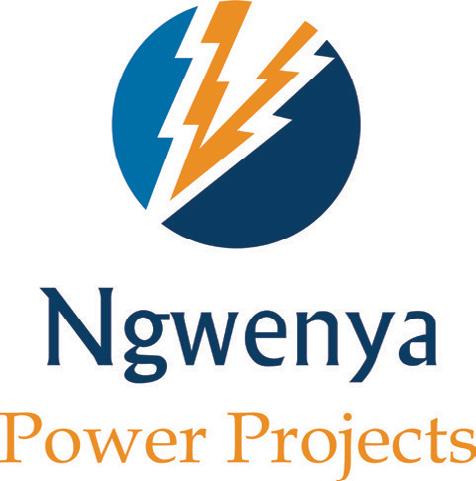
Our team of Qualified Experts are capable of delivering all the services we offer to your satisfaction, on time, every time.
• MV and LV Cable Installations
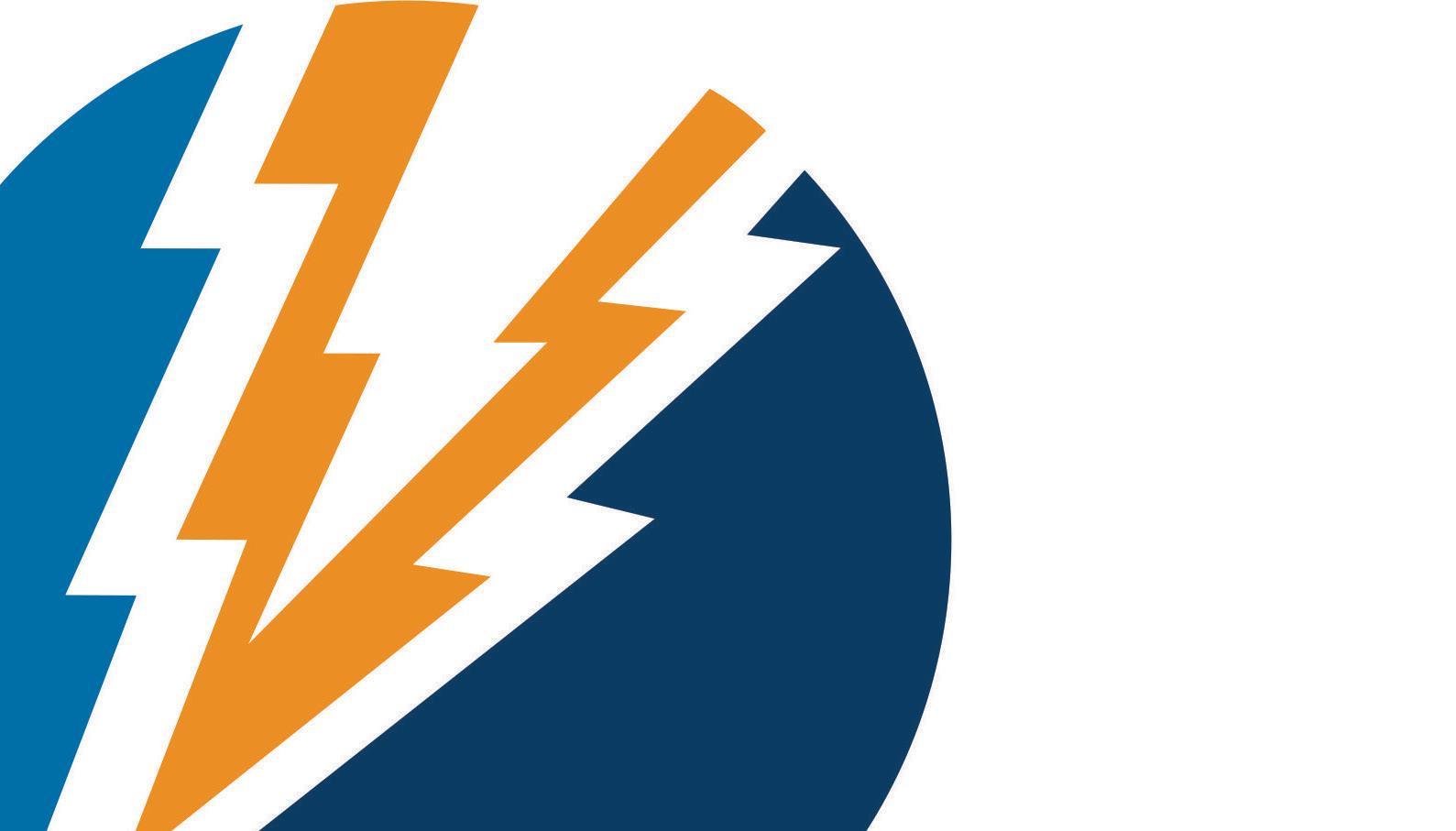
• Reticulation projects, LV house connections
• Street Lighting
• Mini Substation Installations
• MV Cable Jointing and Terminations up to 33kV
• Cable Fault Finding and Testing
• Switchgear and Transformer Installations
• Substation Stringing and cabling
• Earthing Installation
• All your Electrical Needs
South Africa-based engineering, procurement, and construction (EPC) company Lesedi expresses confidence in business outlook.
Lesedi, one of Africa’s foremost EPC companies, is making a significant impact in South Africa by developing crucial skills and playing a significant role in creating jobs.
Lesedi has gained recognition across various energy industries on the continent over the past four decades. Following a very successful 2023, Lesedi is gearing up for steadfast growth, and the company is investing in a pipeline of new young talent and uplifting local communities through training and job opportunities.
Operating successfully in Western Cape and Gauteng for the past 40 years, Lesedi has been actively involved in upgrades and maintenance at Africa’s only Nuclear Power Plant, Koeberg. The company foresees new business opportunities globally and on the continent in the near future, such as Nuclear Engineering and Services, Transmission Lines Infrastructure, maintenance at existing Eskom thermal power plants, IPP Programmes, oil and gas infrastructure, renewable energy and supporting other utilities.
The company has diversified significantly over the past 2 decades, expanding into Industrial, Oil and Gas, and Renewable Projects, with significant references such as Balance of Plant (BOP) contracts, and Renewables, with significant references such as BOP contracts for the Medupi and Kusile power plants, and international nuclear plant life extensions. Lesedi has provided skilled maintenance at more than 29 nuclear plants across the USA, Brazil, UK, Netherlands, Spain, China, France and Finland over the past 18 years or more.
Lesedi’s employees are highly sought after globally due to their
involvement in various nuclear plants worldwide.
Business Development Executive Shane Pereira, said that the company considers opening a branch in the UK, with a focus on Plant Life Extension in Pressurized Water Reactor (PWR) plants as well as Nuclear New build projects, as nuclear services globally are still not saturated, and that nuclear resources faces global constraints. He added that Lesedi’s workforce grew from 300 to over 500 employees in the past two years, and that they have several initiatives to develop a pipeline of new skills and develop existing employees.
The neighbouring community of Atlantis is of primary concern to Lesedi. Atlantis has a high youth unemployment rate; 2011 census figures indicate that 73% of the labour force (aged 15 to 64) is

unemployed. The Lesedi Skills Academy (LSA), established in 2015, supports Atlantis residents primarily, with 92% of trained individuals aged 35 and younger, contributing to Atlantis’ industrialization. The Lesedi Skills Academy trained over 1000 graduates in scarce technical skills over the past decade. The Academy offers the MERSETA and NAMB (National Artisan Moderation Body) accredited Mechanical Fitter and Boilermaker Programmes. This initiative forms part of the Atlantis Special Economic Zone for Green Technologies. The City of Cape Town recently funded 100 students at the academy.
Central to Lesedi’s people-centric approach is HR Executive, Natasha Africa. Natasha highlighted successes from 2023: “Lesedi sponsored 16 students for a Post Graduate Nuclear program at the Northwest University (NWU). The program was partially founded by EWSeta (The Energy & Water Sector Education Training Authority). With over 500 applications received, 16 selected, and 16 graduates, we have the cream of the crop now working at Lesedi. We are grateful that we can create opportunities for our youth and at the same time, develop a future pipeline of talent for our company.” A further 10 bursaries have been made available for the students enrolled at the NWU program for 2024 and Lesedi is sponsoring two master’s students for further nuclear studies at the University of Johannesburg.
One of Lesedi’s long-standing CSI (Corporate Social Investment) initiatives since 2001 is Orion, an Atlantis-based organization that seeks to create a future for people with disabilities. To augment opportunities for the disabled, Lesedi has welcomed 11 such employees in the past year.
Another existing initiative that Lesedi actively takes part in, is South Africa’s Youth Employment Service (YES) program, part of the Presidential Youth Employment Intervention. A private sector led initiative, it calls on companies to offer opportunities for the unemployed. Lesedi is proud that its current youth intake is 15, we earmark 10 to be absorbed, all from the Atlantis community. The youth gain exposure to a highly technical environment, offering them exceptional and valuable job experience.
Natasha Africa, HR Executive, stated that in the last year, they made an investment of 7000 hours for in-house employee training and skills development initiatives, which include assisting employees with professional engineering registrations. She concluded by adding that some 40% of students are female, with 100% black representation, and once apprentices are fully qualified, they have highly sought after skills with significant income opportunities. Graduates from Lesedi’s programs and in-house training are securing positions globally, including in India, the UAE, and ROTEK in Johannesburg.
Lesedi is making a significant impact in South Africa by developing crucial skills and playing a significant role in creating jobs.
• Lesedi’s workforce has grown to more than 500 over the past two years, with a robust business outlook across the continent and global ambitions.
• 16 Students completed a Post Graduate Nuclear program at Northwest University (NWU) in 2023, two Master’s students at the University of Johannesburg, and a further 10 new students at NWU in 2024.

• More than 1000 graduates from the Lesedi Training Academy in Atlantis; 130 employees from Atlantis, 100 students funded by the City of Cape Town
• Presidential YES program - 15 interns in 2023, 10 new interns in 2024, trained in a highly technical environment.
• Focus on training and development for disabled persons.
• Lesedi spent 7000 hours on in-house employee skills development.


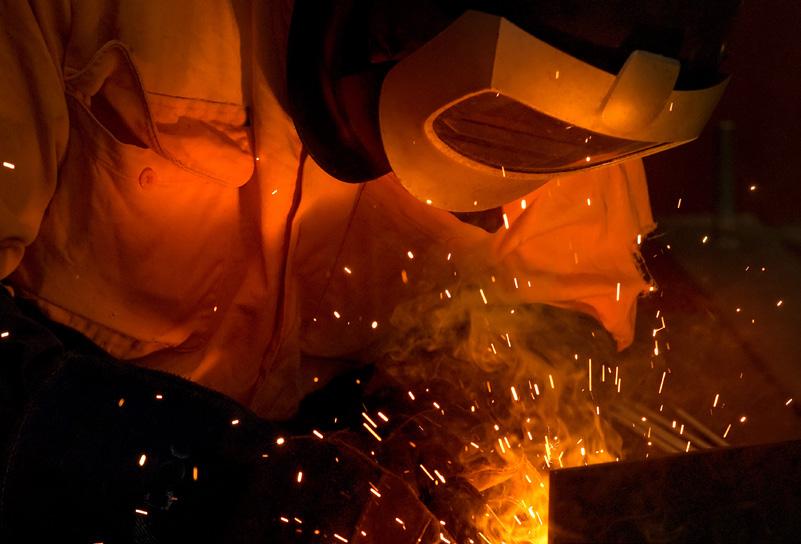

The Lesedi Skills Academy (LSA) is the brainchild of Lesedi Nuclear Services. Lesedi is a leading African engineering, procurement, and construction (EPC), and maintenance company with a long history in nuclear, industrial power, mining, oil and gas industries.
Lesedi executes turnkey bespoke projects from concept and basic design to detailed engineering, procurement, project management, installation and commissioning, as well as project and contract management function.
The Lesedi The Lesedi Skills Academy (LSA) is the brainchild of Lesedi Nuclear Services. Lesedi (amajority shareholder in the academy) is a leading African engineering, procurement and construction (EPC), and maintenance company with a long history in nuclear, industrial power, mining, oil and gas industries. The Lesedi Skills Academy, a private training provider and an EME (75% BO; 42,62% BFO), opened its doors in 2015.
The Lesedi Skills Academy, a private training provider and an EME (75% BO; 42,62% BFO), opened its doors in 2015. The Academy provides skills development and training (Mechanical Fitting, Boilermaking & Basic Welding), allowing young people, and previously disadvantaged individuals to enter the formal job market. Through focussed quality training, employed and unemployed learners are provided with the knowledge and skills to progress in the Engineering and related fields.
The Lesedi The Lesedi Skills Academy (LSA) is the brainchild of Lesedi Nuclear Services. Lesedi (a majority shareholder in the academy) is a leading African engineering, procurement and construction (EPC), and maintenance company with a long history in nuclear, industrial power, mining, oil and gas industries. The Lesedi Skills Academy, a private training provider and an EME (75% BO; 42,62% BFO), opened its doors in 2015.
The Academy provides skills development and training (Mechanical Fitting, Boilermaking & Basic Welding), allowing young people, and previously disadvantaged individuals to enter the formal job market. Through focussed quality training, employed and unemployed learners are provided with the knowledge and skills to progress in the Engineering and related fields. Follow us:Contact Lesedi Skills Academy:
CONTACT DETAILS:
Email: info@lesedisa.com | Julian.vanderPoel@lesedisa.com
Phone: +27 21 525 1530
www.lesedisa.com
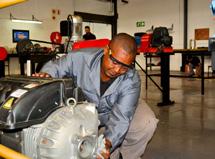
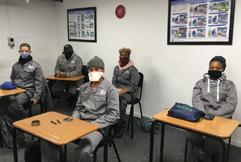
CONTACT DETAILS:
Email: info@lesedins.co.za
Phone: +27 21 525 1300
www.lesedins.co.za
The Academy provides skills development and training (Mechanical Fitting, Boilermaking & Basic Welding), allowing young people, and previously disadvantaged individuals to enter the formal job market. Through focussed quality training, employed and unemployed learners are provided with the knowledge and skills to progress in the Engineering and related fields.

BY LEADING THE POWER GENERATION, MINING, AND OIL & GAS INDUSTRIES SINCE 1984
• EP&C of the Balance of Plant for Eskom’s four Gas Turbine Power Stations constructed in Atlantis and Mossel Bay in the Western Cape, South Africa.
Mechanical erection of 14x150MW gas turbines for Siemens and associated turbine halls.
• Since 1990, Lesedi has successfully completed projects across Africa, illustrating our expertise.
• Execution of turnkey engineering projects in the minerals processing and mining industries.
• Through its network of world-class technology partners, Lesedi o ers gas-cleaning and emissions control plants for its clients.
• Lesedi provides systems for the capture of dust, tars, acid mists, SO2 and various other acidic gases and contaminants in the mining sector.


• 30 years of upgrade and maintenance projects at Eskom’s Koeberg Nuclear Power Station in Cape Town, South Africa, including over 150 modi cations on the plant.
• International maintenance services contracts in England, Brazil, China, France and the USA, resulting in over 75 interventions since 2006.
• Lesedi has successfully concluded agency agreements for several state of the art products and services such as CONCO System Inc. and Arkema (DMDS).
• Lesedi performs Mechanical Heat Exchanger and Condenser Tube Cleaning as the African distributor for Conco Services LLC based in the USA. Conco has cleaned over 100 million condenser and heat exchanger tubes, making it the number one condenser and heat exchanger performance company in the world.
• Lesedi achieved preferential bidding status for two biomass projects for the South African RIEPPP (16.5MW - sugar cane & 5MW - wood chip.) Lesedi is the local partner for Exosun (singleaxis tracking).
• More than 20 projects under development in Africa.
• Our global partner has built over 100 bio-energy power plants, totalling more than 2,650 MW.
• Balance of Plant for Eskom’s Medupi and Kusile Power Station, the biggest dry-cooled power stations in the world
• Turnkey Engineering contracts for plant life extension and major refurbishments icluding:
- High frequency power supplies
- Electrostatic precipitator
- Ash handling systems


To combat climate change, it is imperative that all industries, with a particular focus on the mining and cement sector, take extraordinary measures to significantly slash their CO2 emissions. LOESCHE is at the forefront of developing technologies that enhance the production process, conserve energy, and minimize emissions. In the years ahead, we remain committed to relentless research and development efforts, culminating in cutting-edge solutions that are ready for widespread industrial adoption. Our goal is to provide an extensive array of sustainable solutions that align with our vision for a greener future.
The concept of enhancing efficiency and minimizing material consumption is a universally welcomed principle across all industries where LOESCHE operates. The company’s approach continually advances its positive impact on the environment, extending beyond traditional sectors to encompass fields such as mining, waste management, and the practice of remanufacturing parts to prolong product life cycles.
With Loesche`s process modeling and simulation technologies for various applications, including process design computer-aided engineering, virtual reality, Big Data analysis, and real-time process optimization we have assisted various operations on their digital journey.